Last week, my sister Julie and her fiance, Michael arrived from Los Angeles. After a weather delay in New York city for a day they arrived on Christmas day. The weather was perfect for Christmas. A heavy frost coated the countryside in white. So, our afternoon walk was quite spectacular. Unfortunately, my camera didn’t accompany us, so I don’t have any images to share.
The next morning, I had to go back to work, but Julie and Michael borrowed our car and went to visit friends in Paris. When they returned, they agreed that Paris is an amazing city.
Next stop was to the Czech Republic’s capital city of Praha (also known as Prague). Although communism took hold of the country in 1948 and held on until the Berlin Wall fell in November 1989. Now, capitalism has firmly returned and the country (and Prague specifically) has become rather expensive. Nonetheless, the architecture is something to admire and the fact that the city was relatively untouched during WWII makes the city center remarkable.
We began our tour at the Prague Castle, or Prasky hrad. This is the most popular tourist attraction in the city. Also, according to the Guinness Book of World Records it is the largest ancient castle in the world. With a length of 570 meters and a width of about 128 meters, it is almost a city unto itself.
Here are a few images of the stoic guards at the entrance.
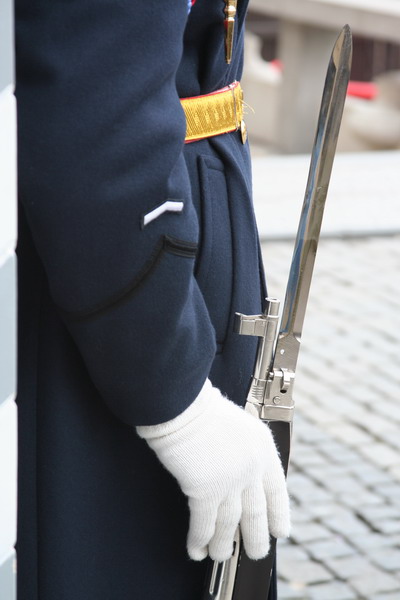
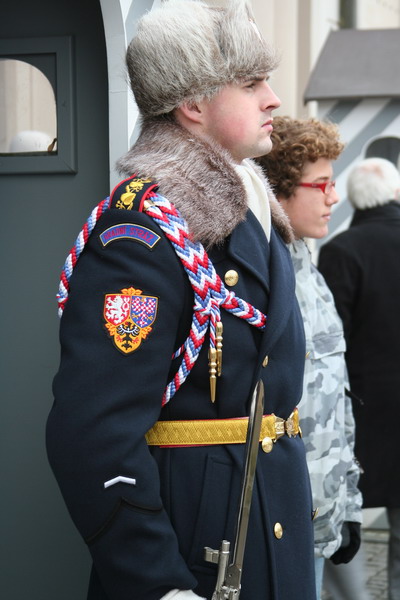
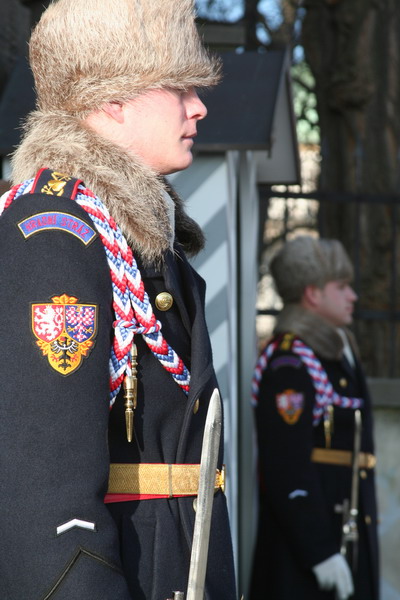
This is St Vitus cathedral. It looks very Gothic and was begun in 1344, but wasn’t completed until 1953, with the very modern touch of the artists carving sculptures of themselves over the triple doorway.
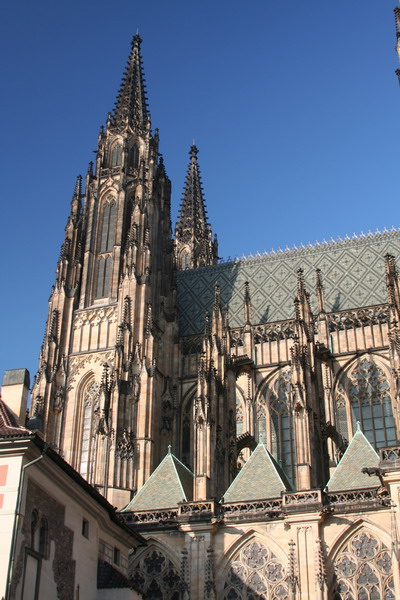
Among the many reliquaries housed in the cathedral is the tomb of St Wenceslas. He was the Duke of Bohemia in the 10th century, but is perhaps best known as the subject of the Christmas carol, Good King Wenceslas. Interestingly, the lyrics make no mention of Christmas, only the very Christian virtue of aiding the less fortunate and a saint’s feast on Dec 26th.
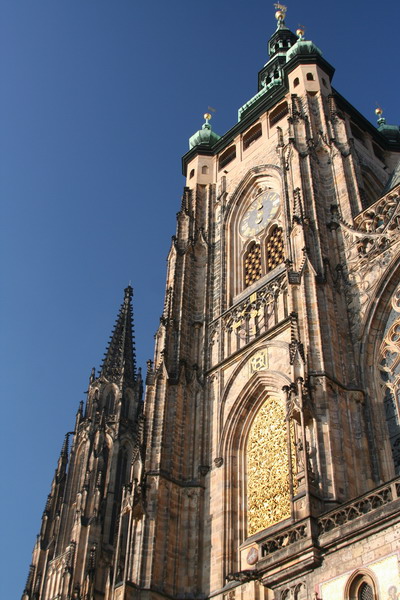
There were also blacksmiths outside the castle practicing their art. Julie and Michael picked up a very nice piece for their home.
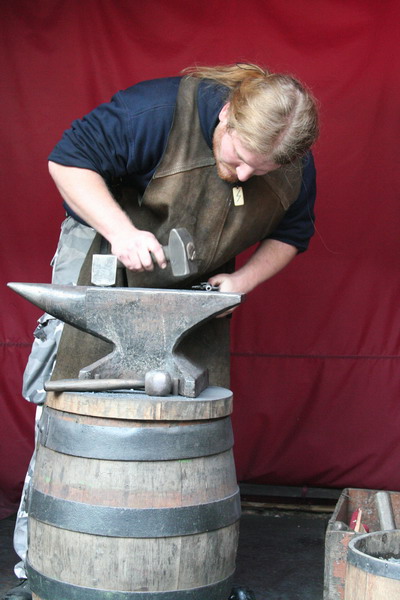
The castle also afforded great views of the city.
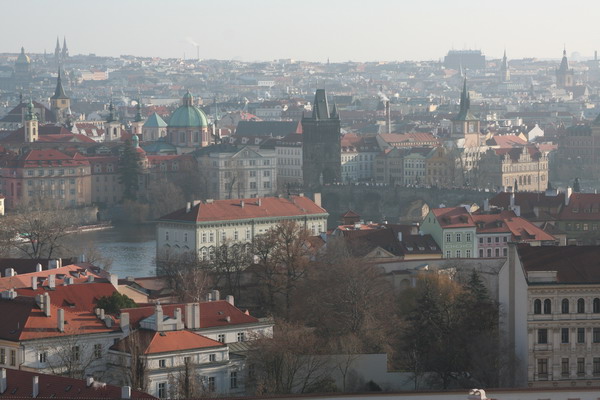
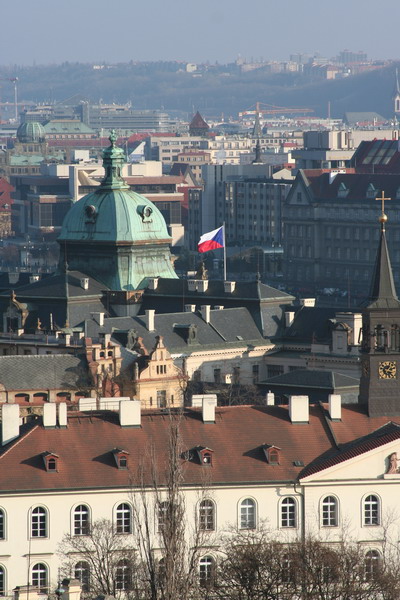
Then, we wandered down to the Vlatava River.
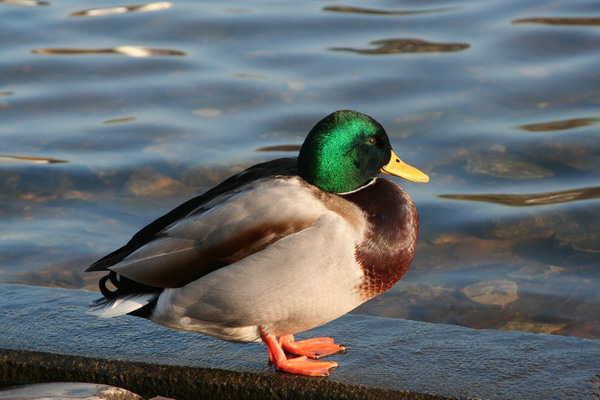
This is the 500 meter long Charles Bridge. It was completed around 1400 and withstood the constant strain of wheeled traffic for 600 years when it was made pedestrian after WWII.
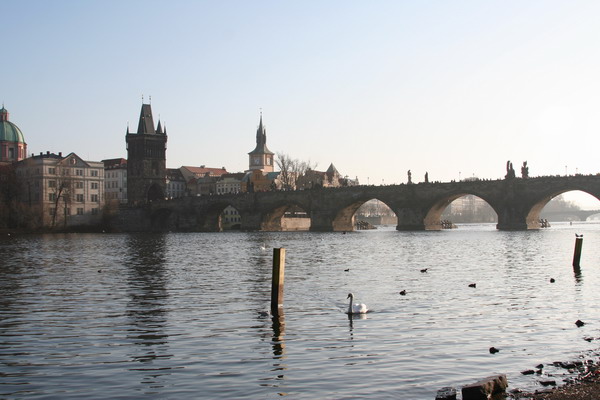
These are a few views from the bridge.
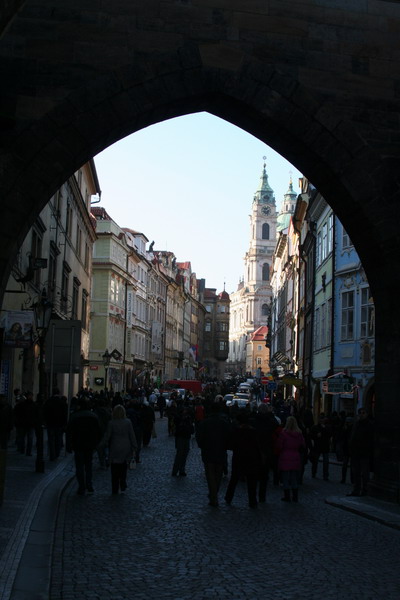
You can see the crush of people can be a bit much, and this wasn’t even the summer tourist season!
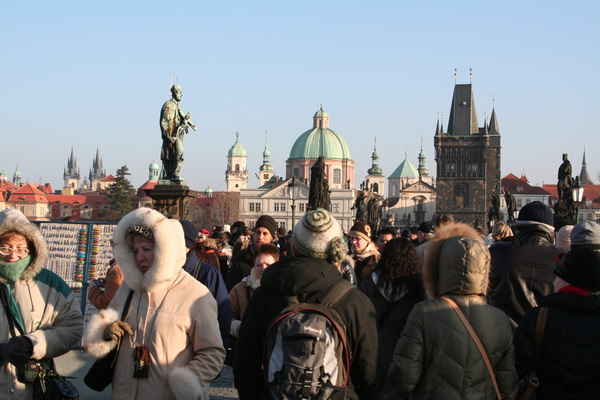
This perspective offers a nice view of the castle.
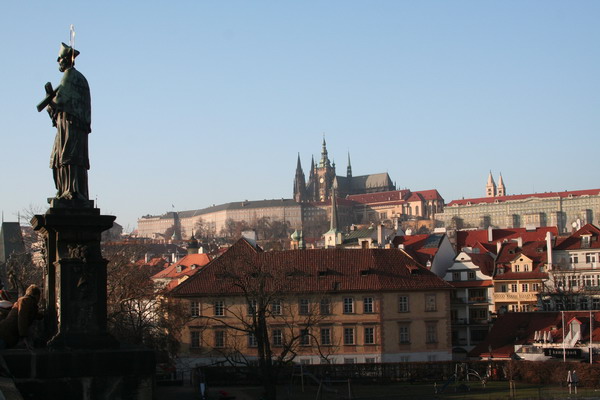
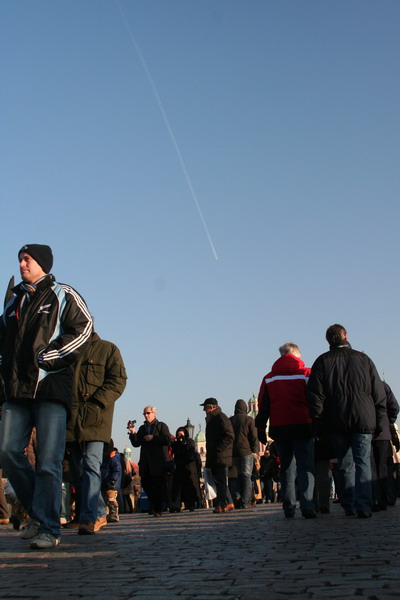
A clock tower in the Old Tower Square.
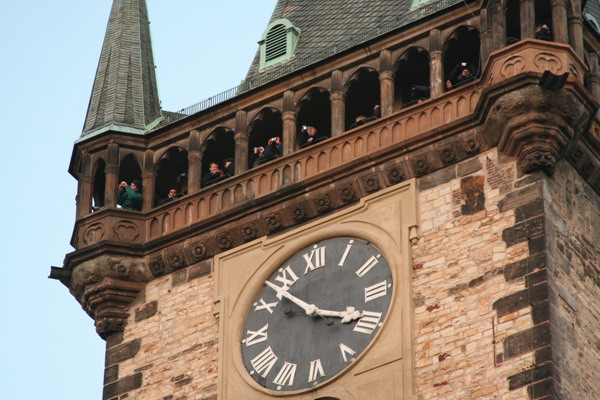
This is the astronomical clock. It dates from the 15th century and drew quite a crowd to watch the hourly parade of the 12 apostles.
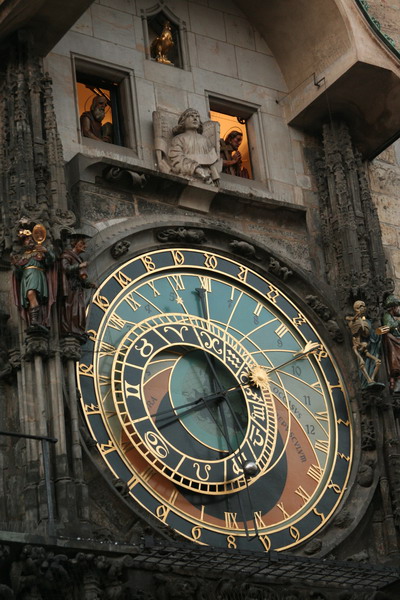
These tasty rolls were sold at several places in the main square, which was teeming with the commercialism of a Holiday Market.
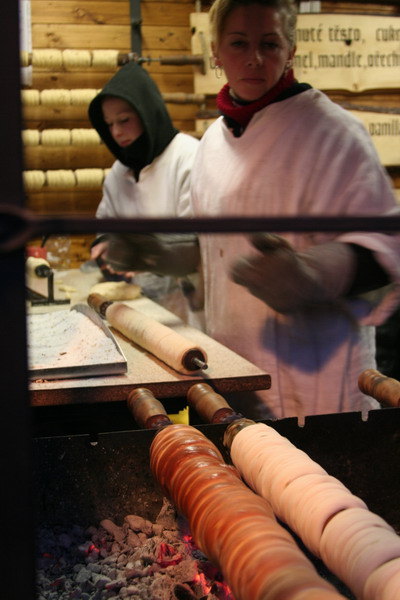
These are a few images from the market in the Old Town square. Although this particular market is relatively new, the square has been the center of Prague’s commerce since the 10th century.

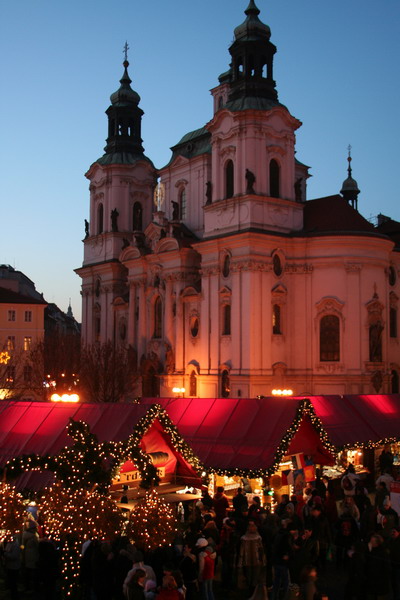
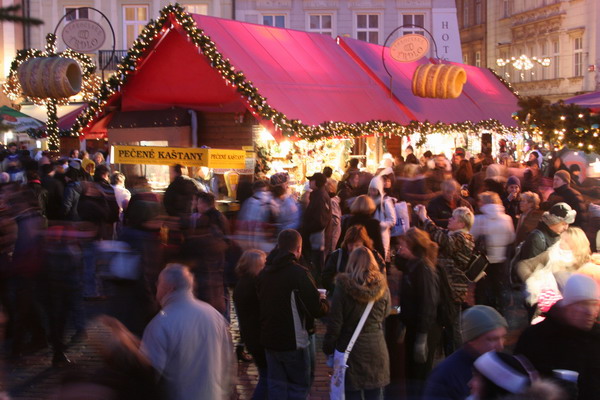

This is the distinctive Gothic Church of Our Lady Before Tyn.
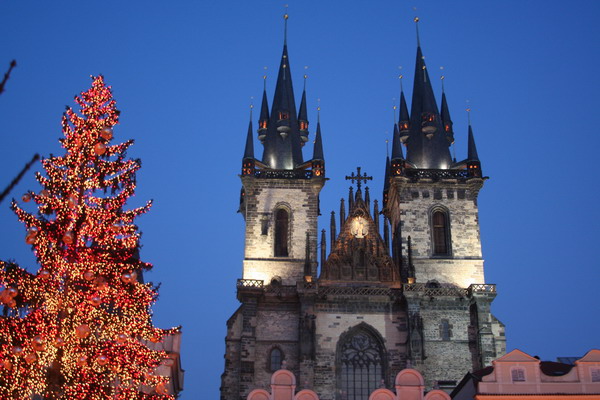
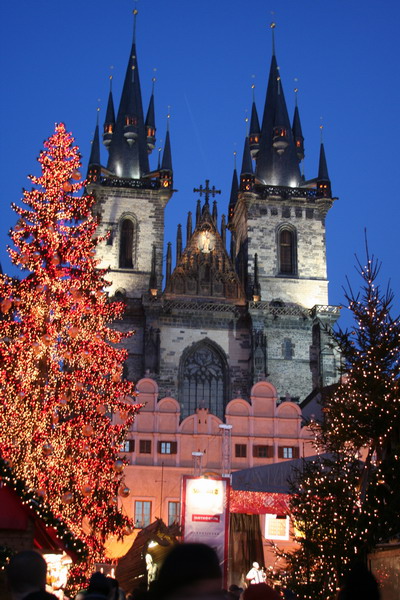
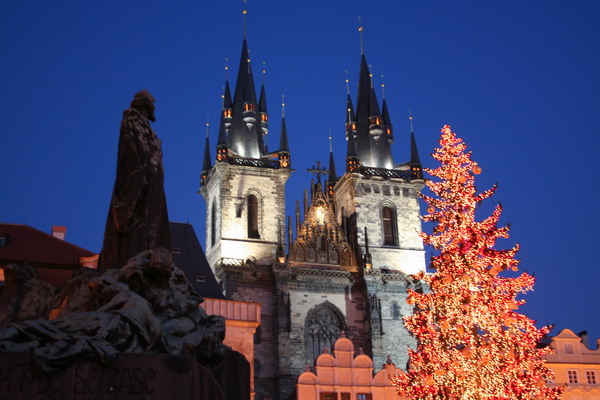
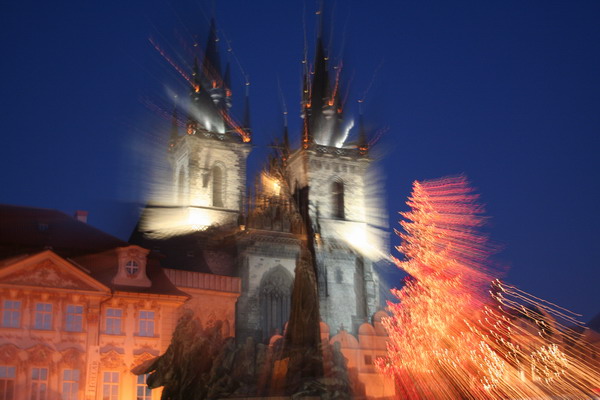
Tasty ham being served rotisserie style.
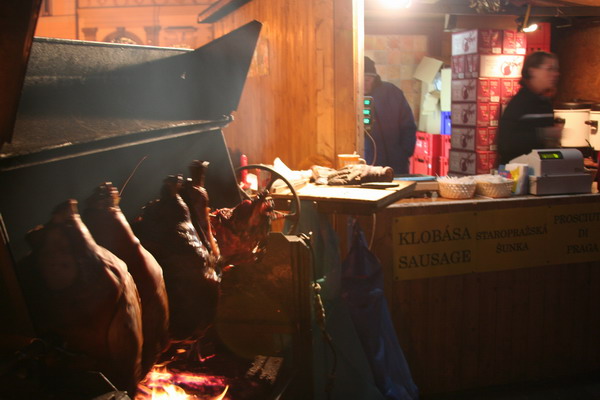
The music was very enjoyable.
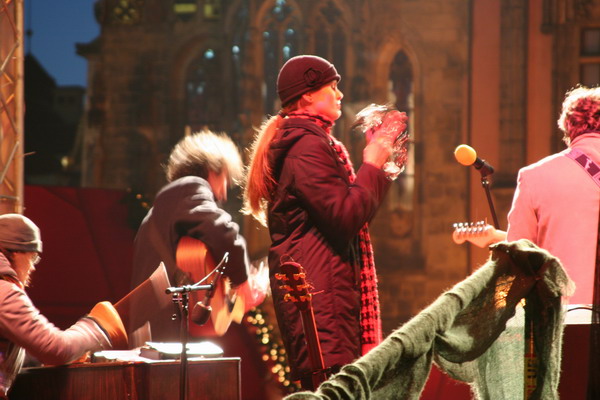
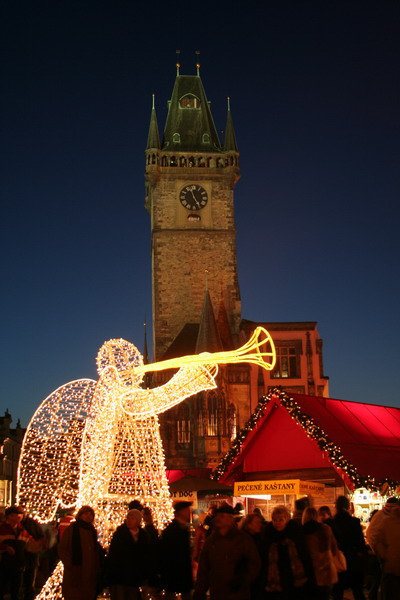
Julie and Anna as the subway train passed.
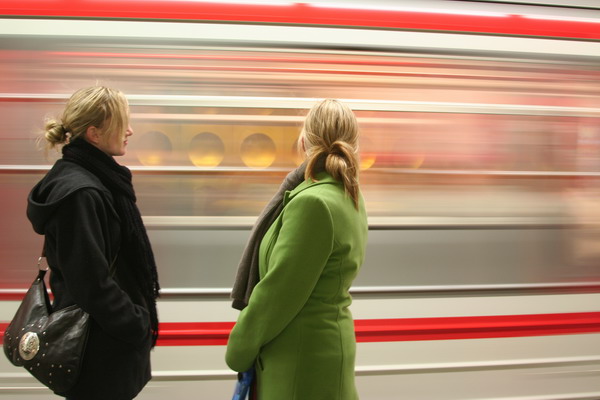
The weekend went by very quickly, and was quite nice. However, we left with the feeling that commercialism has strongly taken root again (to its credit) and left the city VERY expensive for visitors and locals alike.
Next stop was Amsterdam for a huge New Year’s celebration. Until then…
–Jim
Category: Trips
Cruising Part 5 — French Riviera
Our final destination in our journey was to the French Riviera.
This first image is from the cinemagraphically famous city of Cannes. The Vieux (Old) Port was quite pretty and the yachts and sailboats docked there were very enticing because a number of them were for sale. Of course, the prices weren’t listed for some reason. Perhaps one day…
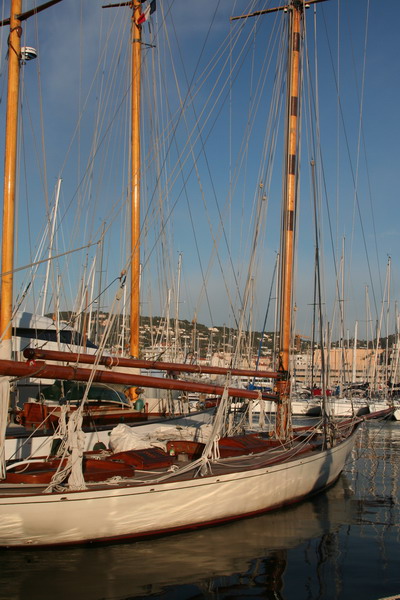
This is an image of the quaint hill-top village of Eze. Since it wasn’t tourist season, nearly every shop was closed down. No matter, it allowed us to wander the empty (but pretty) streets at leisure. One thing we did pick up was a little cologne for me. Since the nearby village of Grasse purportedly produces a significant portion of the world’s essences, and there was a factory right there, we decided to sample some of the fragrance.
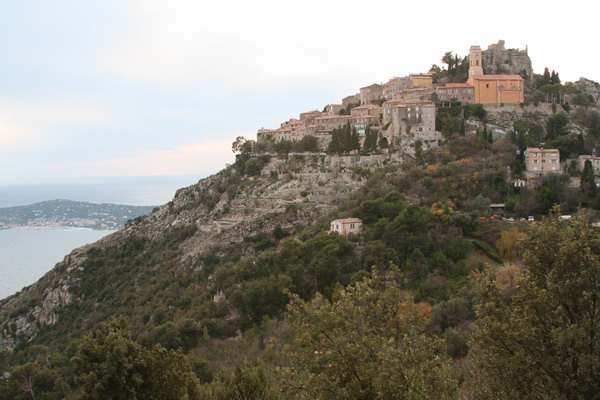
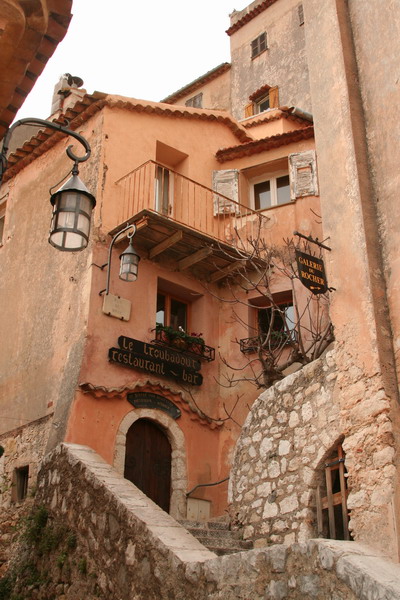
As you can see, Liz and Ash also enjoyed wandering the empty streets.

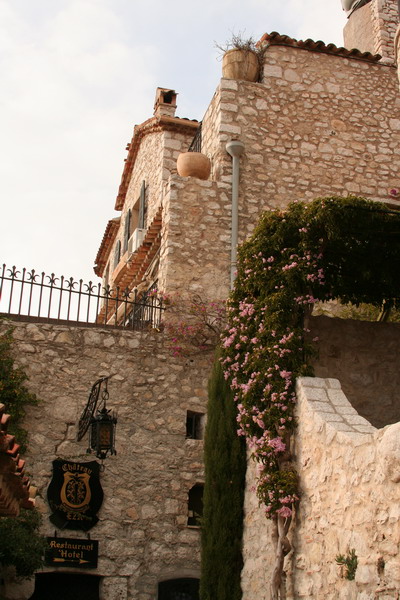
We arrived in Nice in the late afternoon. The hostel we stayed at was quite nice. 🙂 Not only was it inexpensive, it had a great vibe and there were predominantly English speakers there. This is the view
from our balcony.
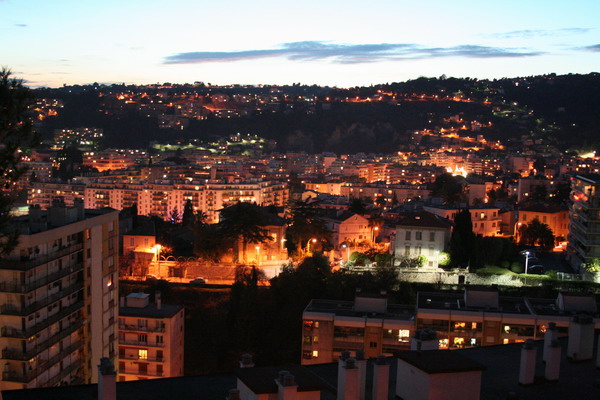
The city of Nice itself is very enjoyable to stroll through. This is the Quai des Etats-Unis. So named for the USA after WWI. It’s a great place to watch the sun set from.
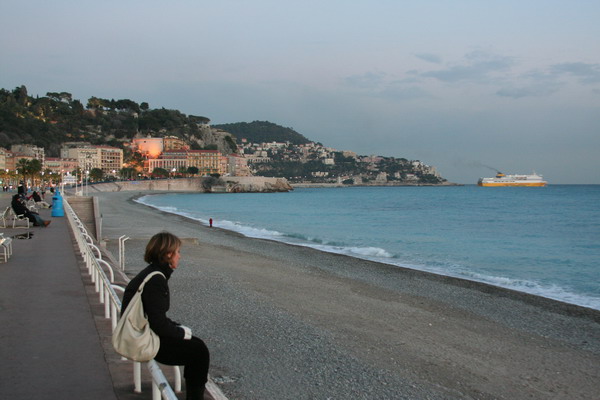
You can see Ash was jumping for joy too.
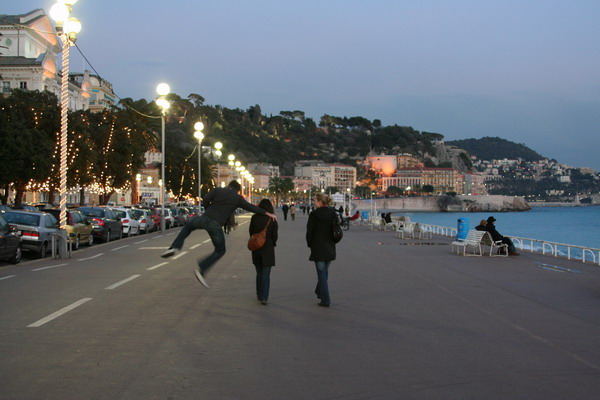
Anna, Liz and Ash strolling along the promenade.
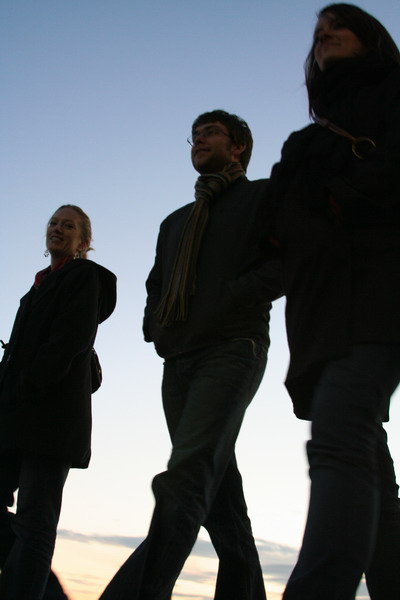
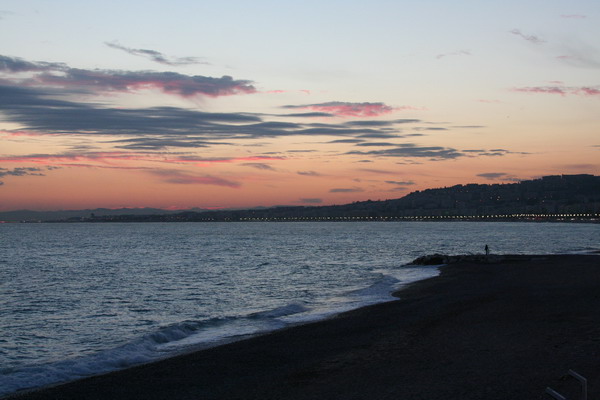
Such an interesting contrast. Beach and Christmas. It doesn’t matter where we are, if there is a fusion of beach/tropical and Christmas, it just doesn’t seem right. I know many many people grow up with this seeming juxtaposition, but it just always strikes me as a little strange.
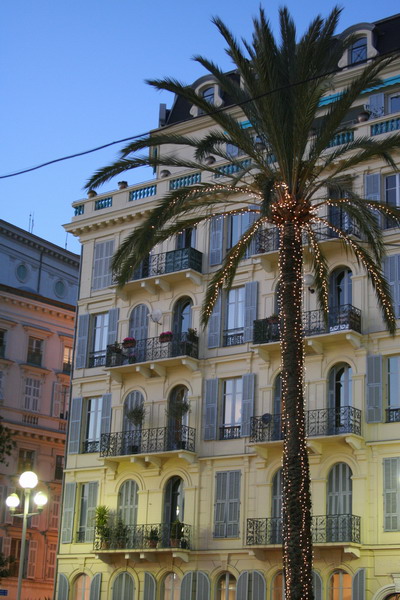
The traffic wasn’t the best either.
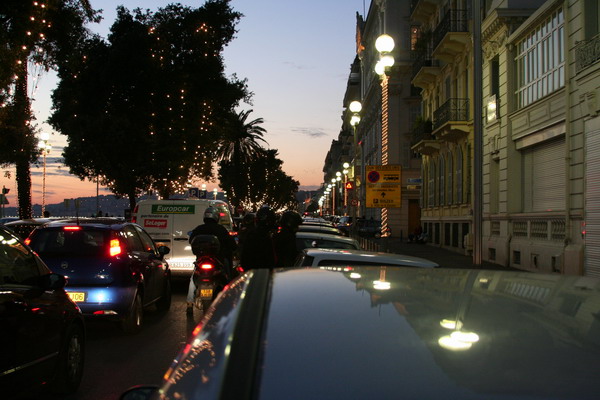
Next, we wandered through the old city.
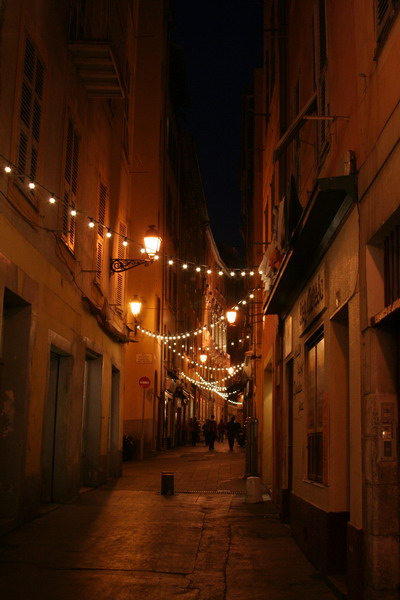
The ice rink was set up right next to the Christmas market. Apparently, this phenomenon is becoming more and more popular throughout Europe … a market of predominantly hand made goods with roughly a Christmas theme.
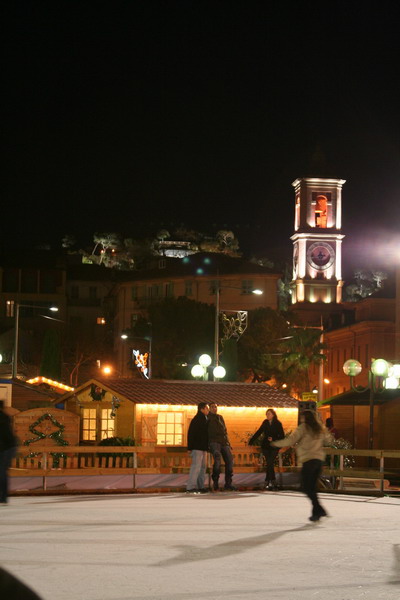
More of that juxtaposition.
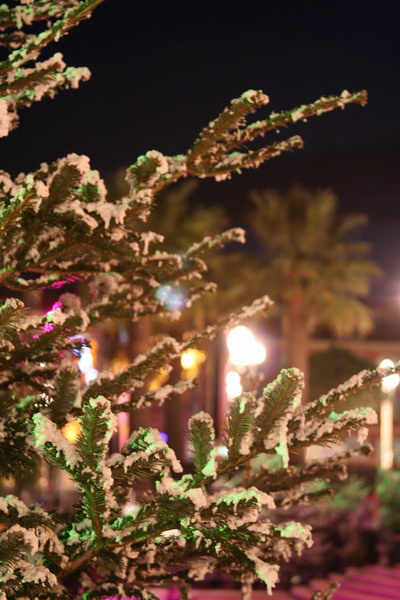
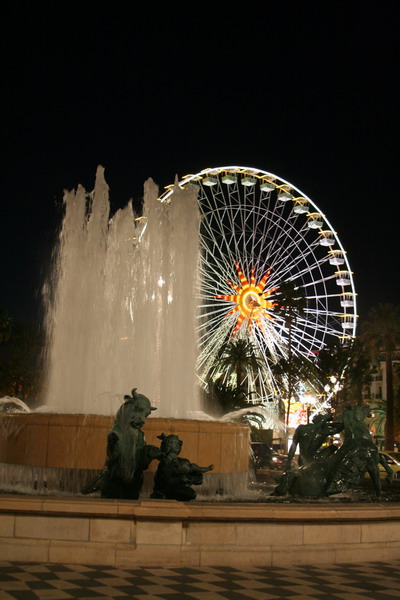
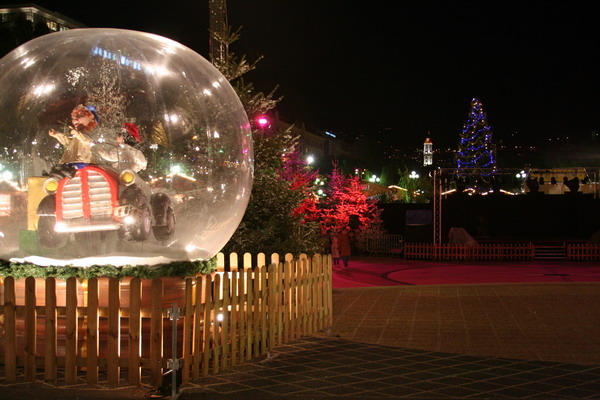
Happy Holidays!
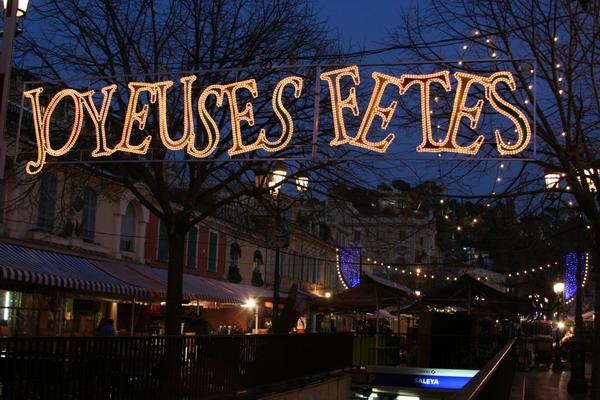
With that, we bid Liz and Ash a very fond farewell. We hope to go visit them in Melbourne sometime in the future. We’ve heard it’s the best Australian city to visit. We really enjoyed Sydney and Townsville when we visited last time though. So, we’ll just have to wait and see.
Then, we hit the road again and drove most of the day to get home to Germany.
Over all, it was the best trip we’ve taken in a long time. It was so nice to take a real vacation to fun, and exotic locations. Plus, to have enough time to truly relax. Being on a cruise really enables one to slow down and chill out.
So, until the next adventure…
–Jim
Cruising Part 4 — Spain, Italy and Monaco
The final destination for our cruise was to the southern Spanish city of Málaga. We only had 5 hours, so our tour was brief … but long enough.
We began with this 16th century cathedral.
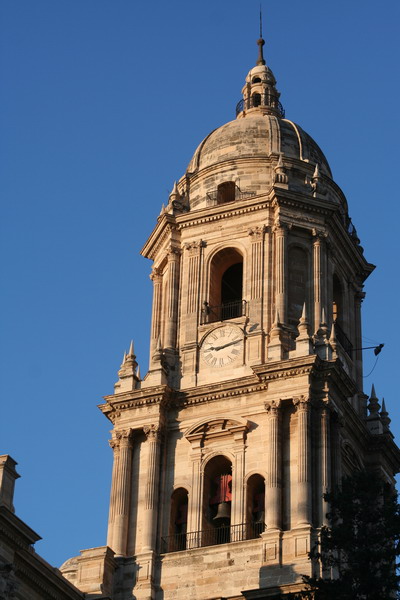
Don’t know who took this one…
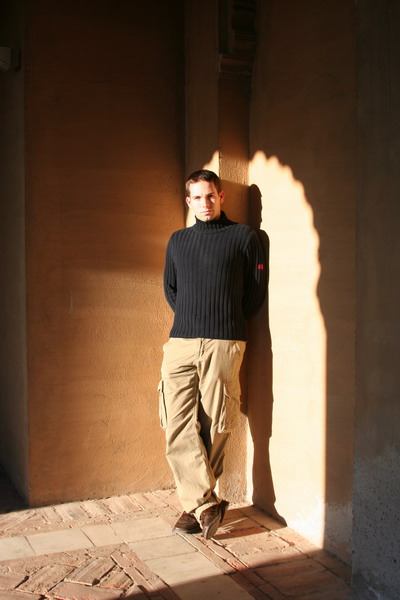
These images are from the Moorish alcazaba (from the Arabic word for fortress), which was predominantly built in the 11th century
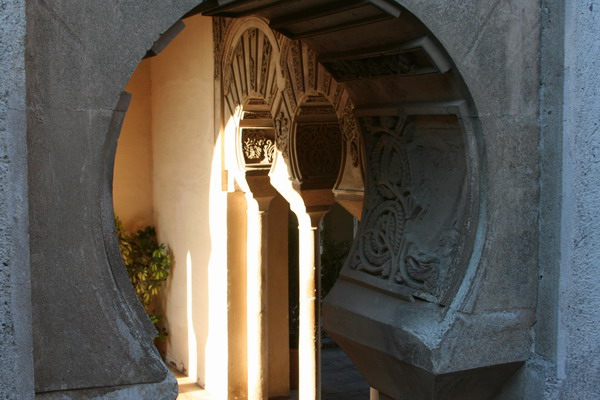
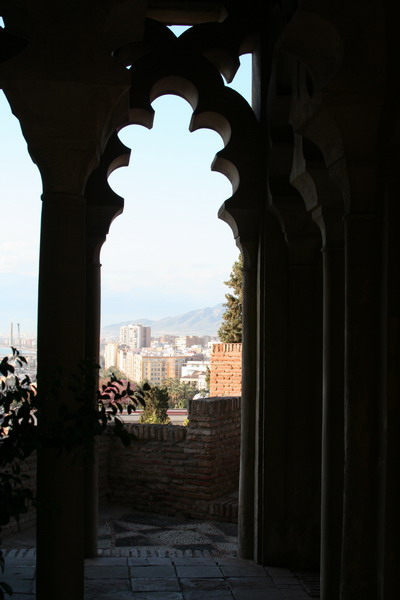
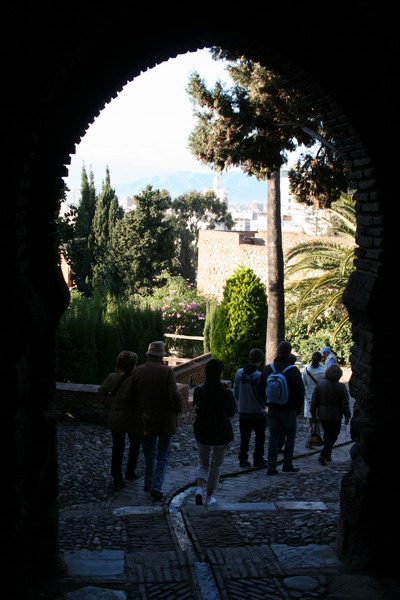
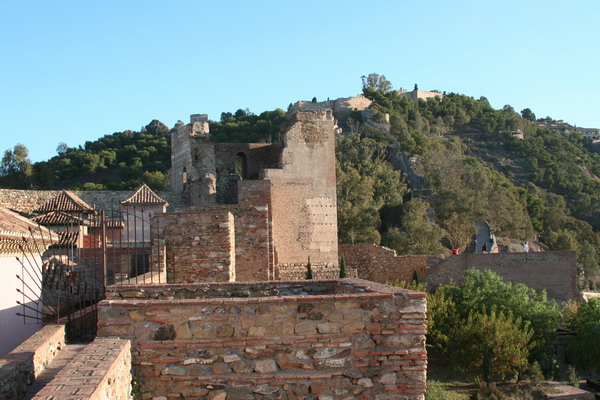
This is a view of Málaga from the fortification.
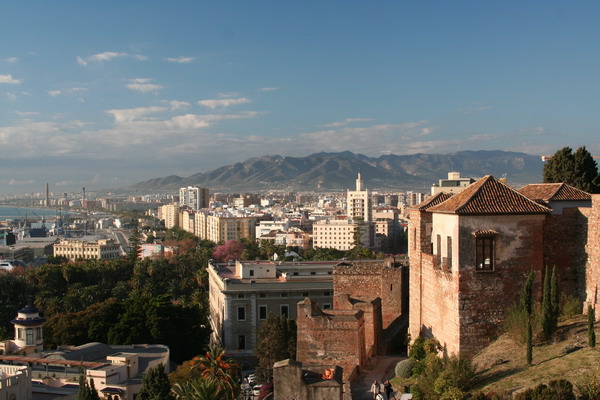
Two famous sons of Málaga are Pablo Picasso and Antonio Banderas. We decided to visit the large museum dedicated to Picasso. It was interesting to see so many of his works, but sadly we still do no appreciate his art as much as we are supposed to.
Finally, we walked back past the church and out to the boat.
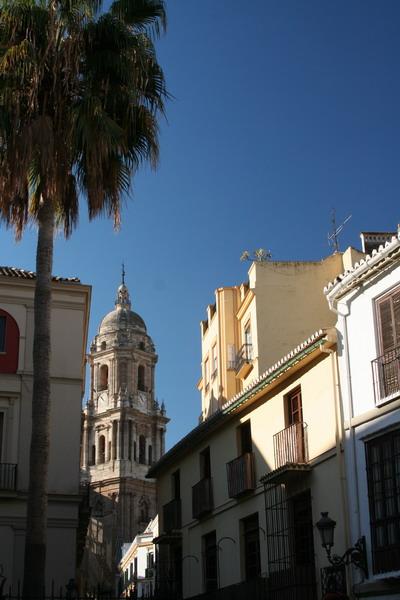
After Spain, we spent another two days on the ship. Although we had some rough weather coming back to Italy, it was a great way to finish up. We had a great time.
This is the view that greeted us when we woke up the final morning before we disembarked. Savona was quite pretty in its own right.
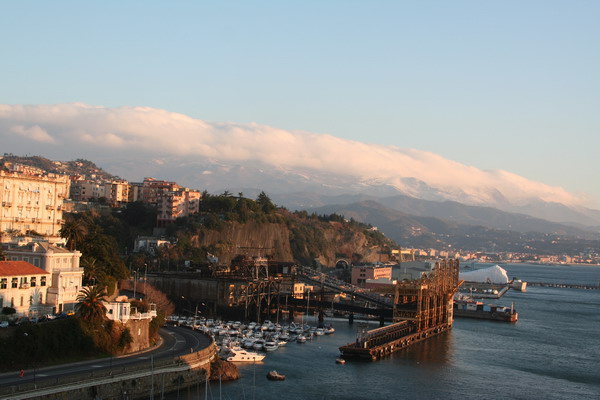
After we got off the ship, our friends Liz and Ash accompanied us on the next leg of the voyage. We all piled into our little car (with bags stacked to the roof) and headed west.
Next stop was to Monaco, the most densely populated country in the world (and second smallest, after the Vatican City). There are only 32,000 residents, but the size is merely two square kilometers (485 acres).
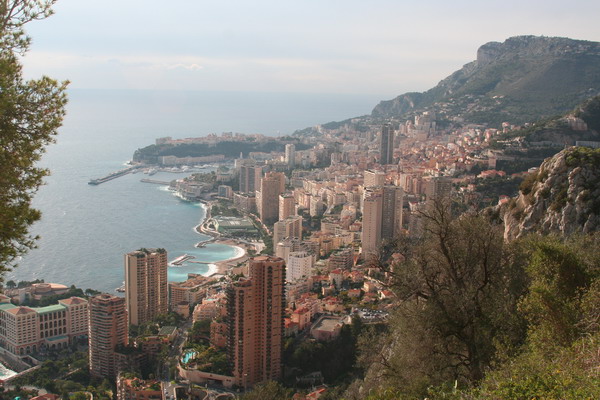
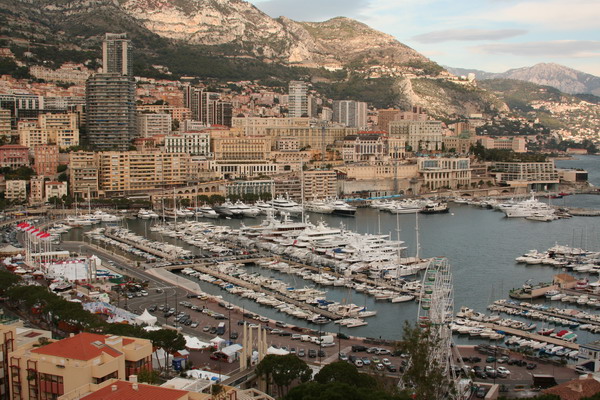
This is a view of the palace of Prince Albert II. The country has been a constitutional monarchy since 1911. His father, Prince Rainer III was married to Princess Grace Kelly. Prince Albert II ascended to the throne in 2005 after his father passed away.
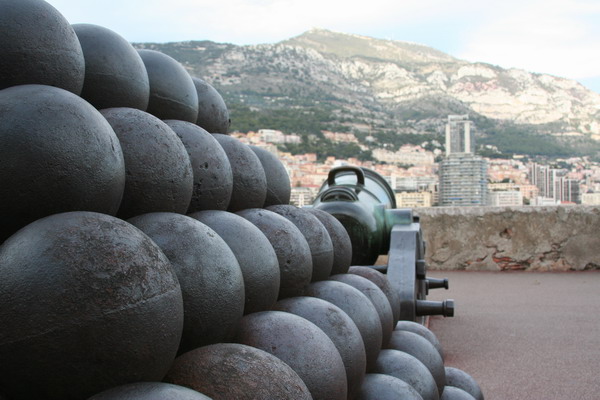
These guards are from a company of 112 soldiers that patrol the country in addition to guarding the palace. There are only 2 companies in the Monaco military which consists of about 240 people.
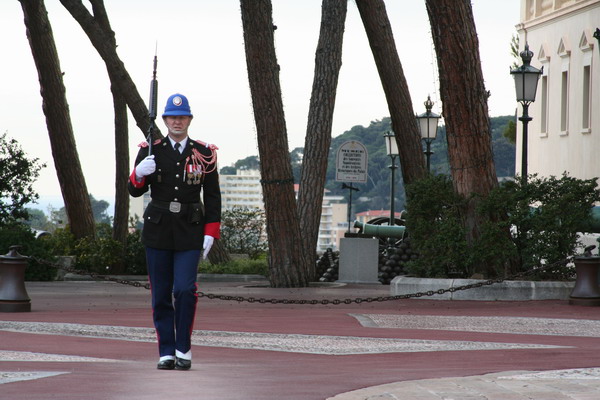
The mirror reveals the very famous Monte Carlo Casino.
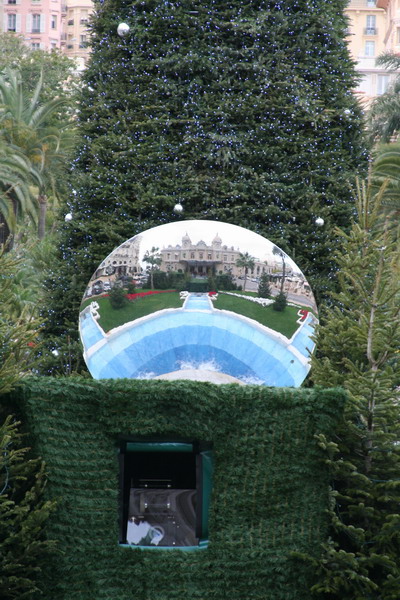
It was a short visit to the very pretty country, but well worth it.
Next stop was just down the road. We explored several villages on the French Riviera.
–Jim
Cruising Part 3 — Atlantic Islands: Canary and Madeira
The next stop was to Tenerife, the largest of the seven Canary Islands.
Not only are the islands part of Spain, they also have the highest mountain in the country. You can see how the volcanic mountain rises out of the sea. It’s quite dramatic landscape. This is also a chance to see the outside of our floating city/home.
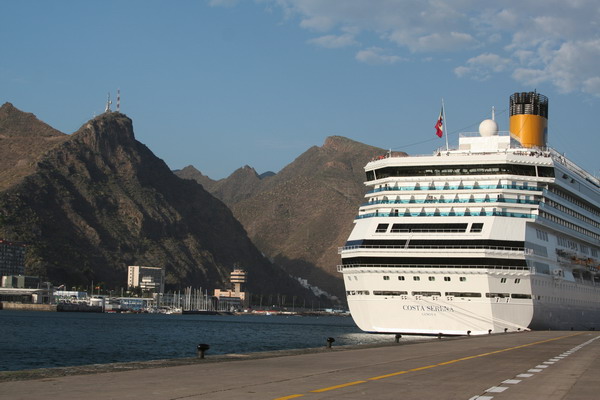
We and our Australian friends, Liz and Ash decided to rent a car and drive around the island. We docked in Santa Cruz on the eastern side and these next three images are from the west side.
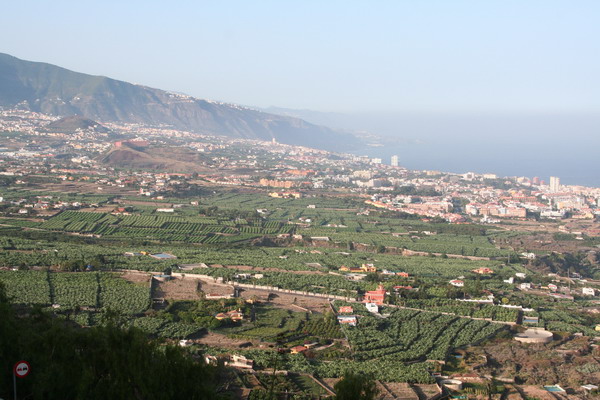
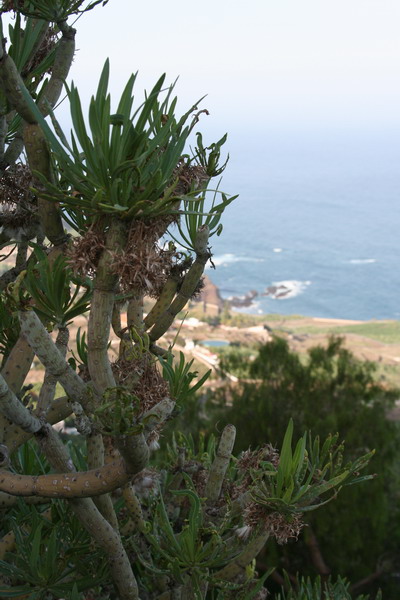
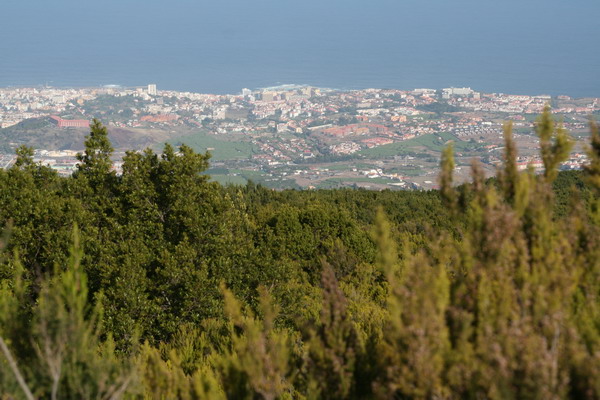
Two very pretty ladies with the Teide Mountain in the background.
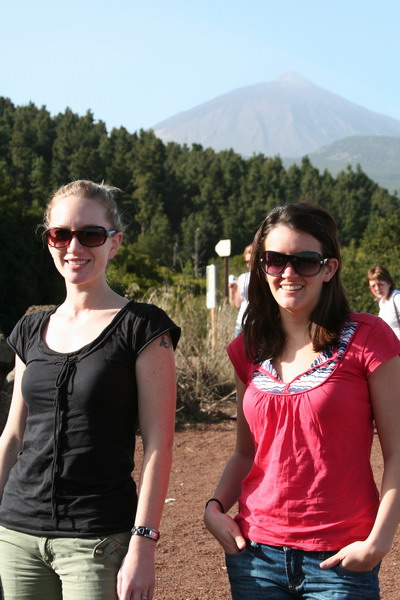
We decided that the mountain was so pretty that we wanted a closer look. So, we drove to the center of the island and took a gondola up to near the top of the 12,188′ peak.
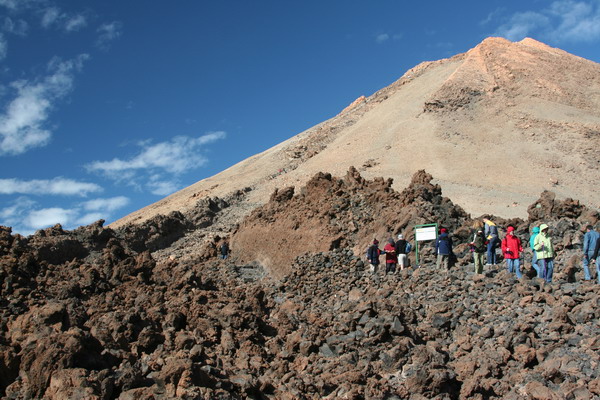
Here is Ash.
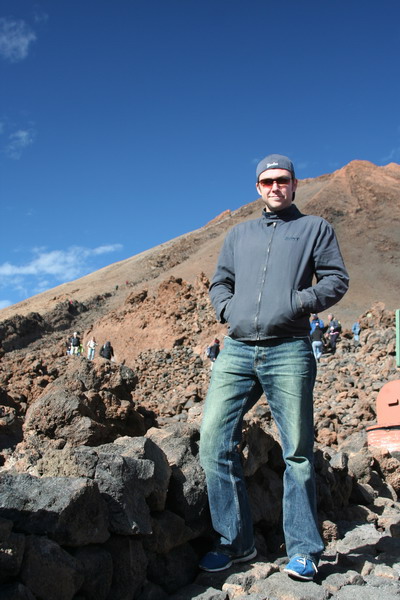
The volcanic rock formations were quite beautiful. This volcano is the third largest in the world. Fortunately it’s been almost 100 years since the last eruption (1909).
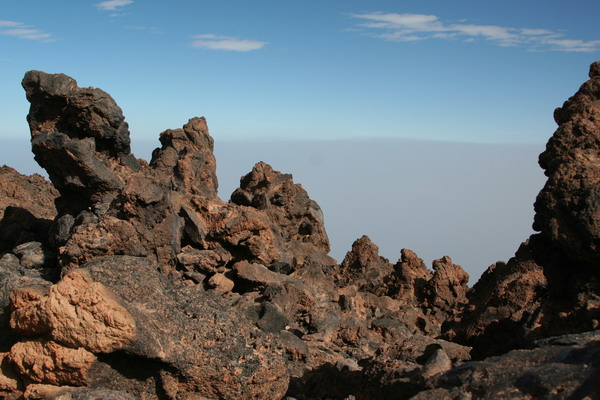
As you can tell here, Ash was quite chilly. The temperature drop and wind increase was expectedly significant coming from sea level.
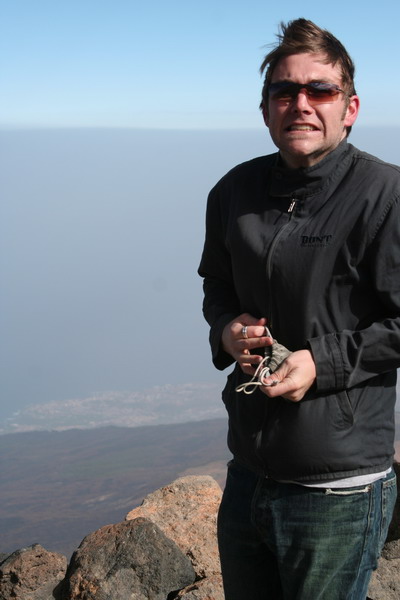
Another view of the peak.
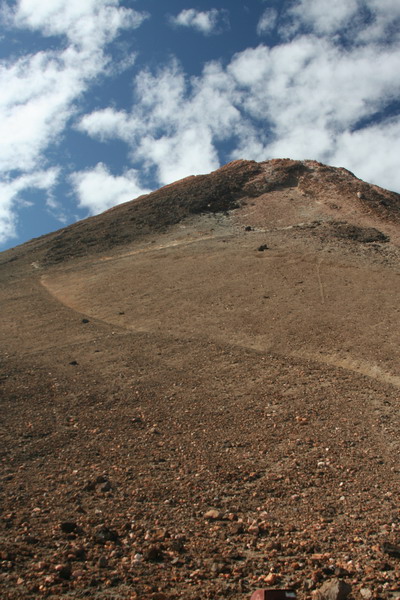
Two rugged mountain men…
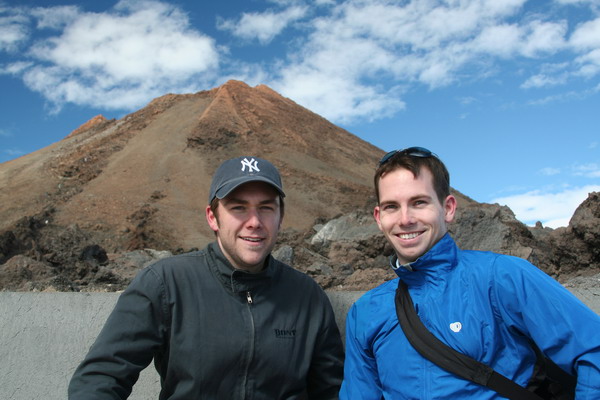
More of those rock formations.
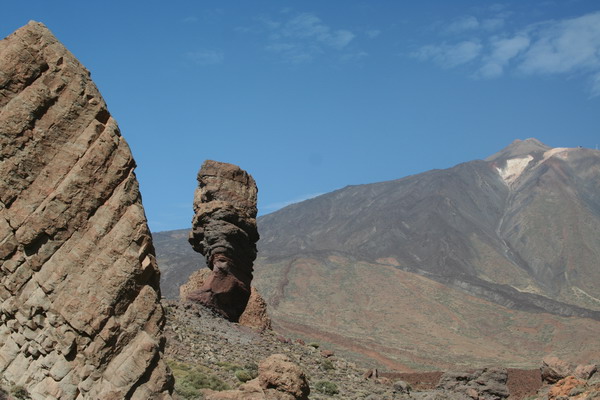
Some random photographer.
This is a picture that Liz and Anna requested. Can you tell who was supposed to be the subject?
After the mountain, we headed to the beach. Unfortunately, the island is quite large and it took a little longer than we hoped to get around. That meant we had very little time to enjoy the black and white sand beach. It was still a welcome change from the chill of Northern Europe.
After a great day on Tenerife, we hopped back on the boat and sailed north. We came to more volcanic islands, this time owned (at least politically) by Portugal since the early 15th century. These are the Madeira Islands. We pulled into the port of Funchal.
Our intent was to go SCUBA dive, but the currents were too strong. So, we adapted the plan and decided to go up into the mountain and explore the botanical gardens. We heard that it contained all the flora of the islands in one place. Since we only had a day, we thought that might be a good way to experience the island.
This is another view of our home, Costa Serena.
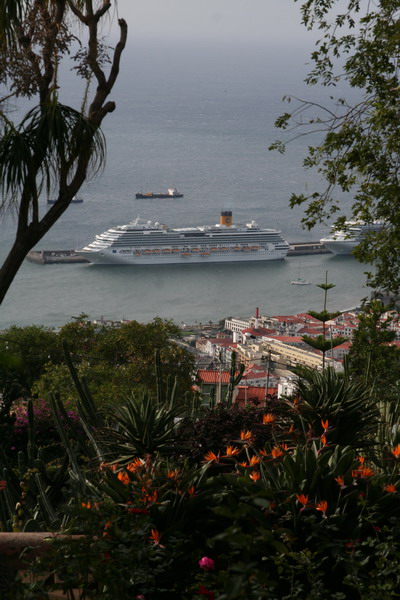
These are a few pictures of the flowers. This flower is Anna’s favorite.

My personal favorite.
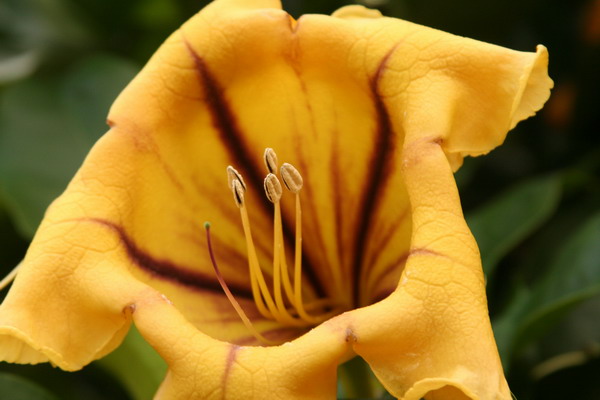
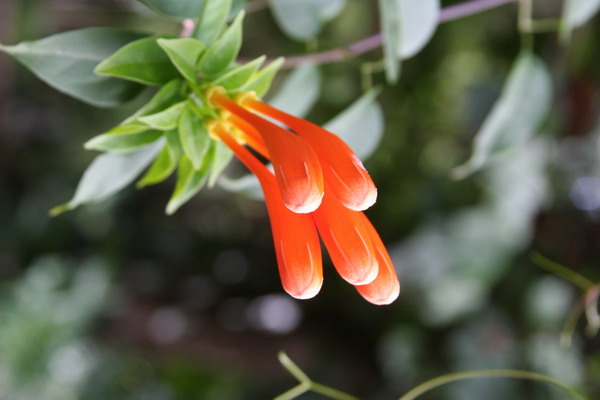
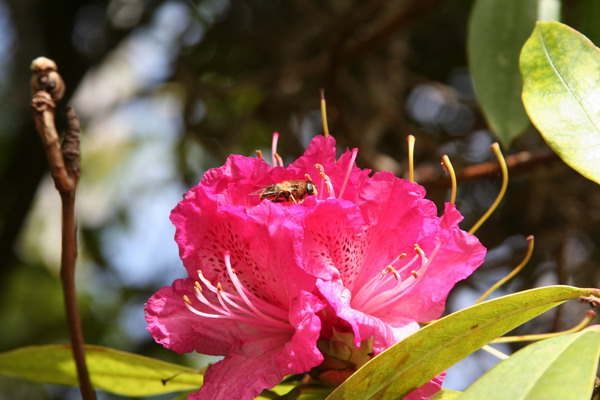
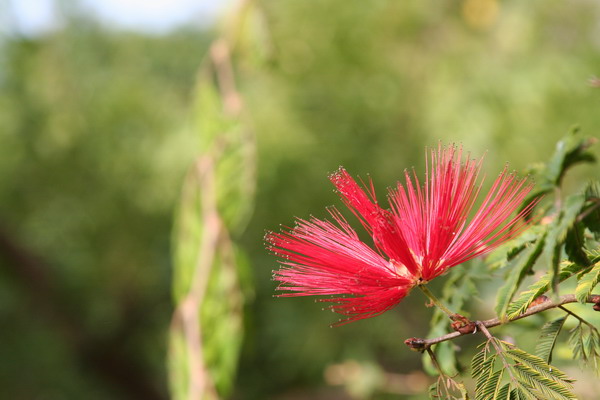
Then we met some friendly (or at least hungry) friends.
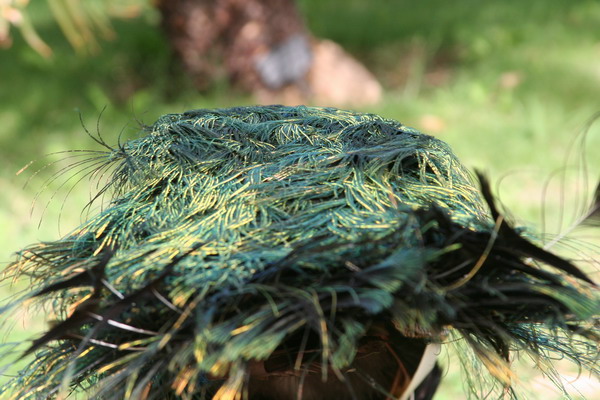

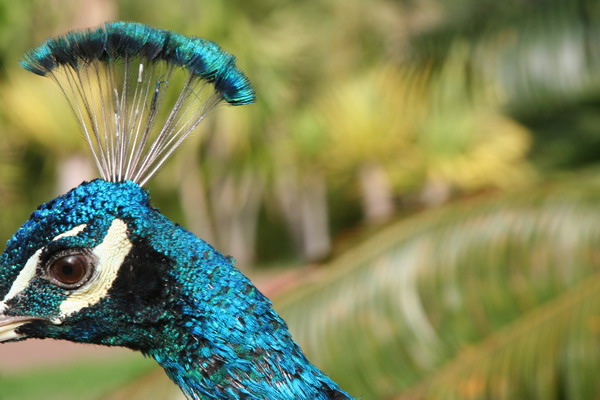
This guy didn’t appear to be quite as hungry.
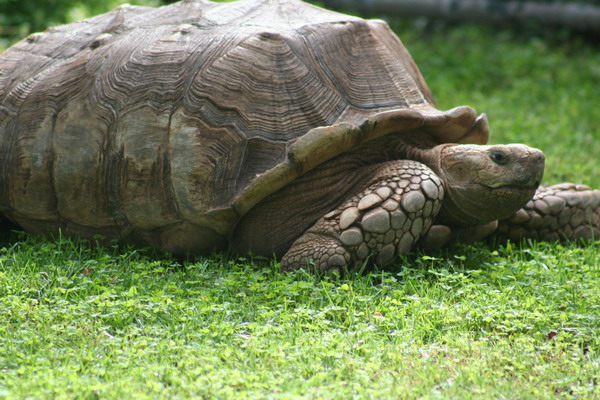
Then, we took another gondola up higher on the mountain.
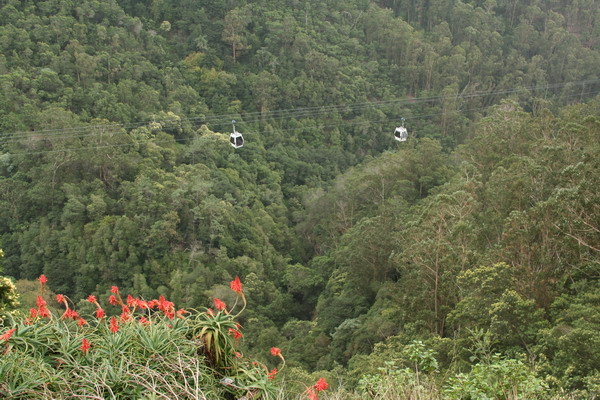
After we got to the top, we took a bus that careened down the steep, windy road back to the city.
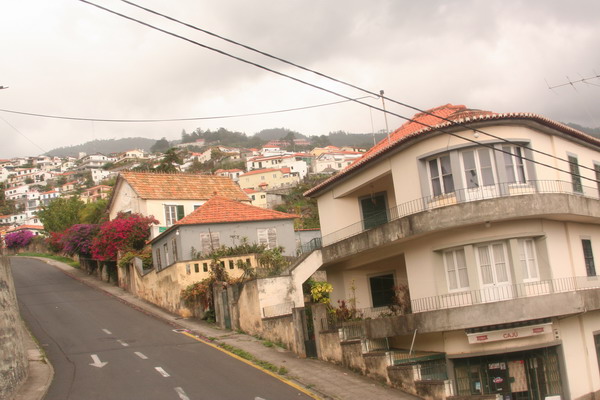
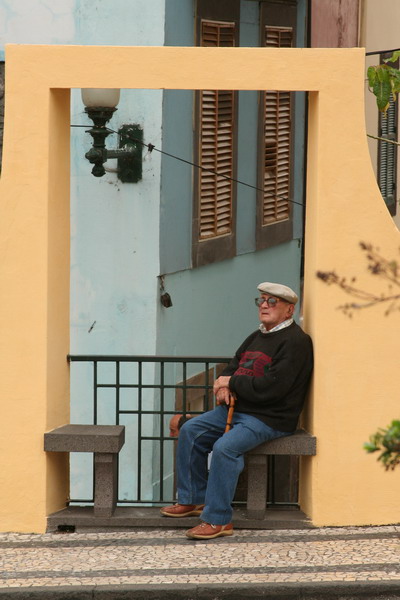
On the walk back to the ship, we came across a carnival. Although the rides looked like lots of fun, we decided that watching would be enough.
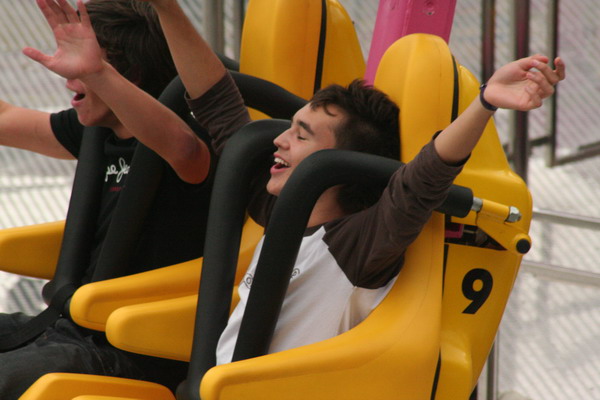

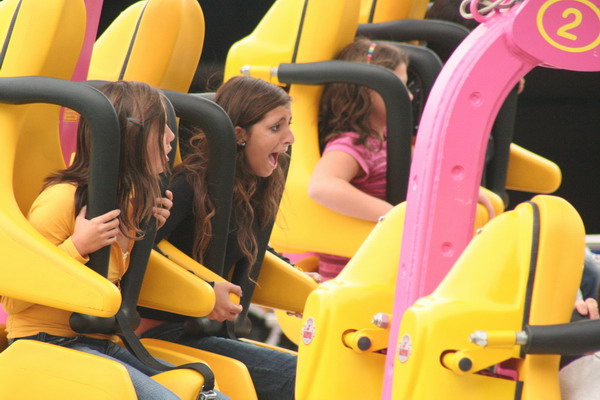
That concluded our time on the Atlantic islands that are politically and economically tied to Europe, but geologically tied to Africa.
We enjoyed our time there.
Next up, return to Europe.
–Jim
Cruising Part 2 — Morocco
After a very enjoyable day at sea, cruising through the Strait of Gibraltar, we arrived at the Moroccan port of Casablanca. It’s a major city, but from what we saw, not terribly interesting. So, instead, we decided to catch a train and go three hours South to the base of the High Atlas mountains. There we found the most colorful, vibrant street life and market we’d ever been to. It was the city of Marrakesh.
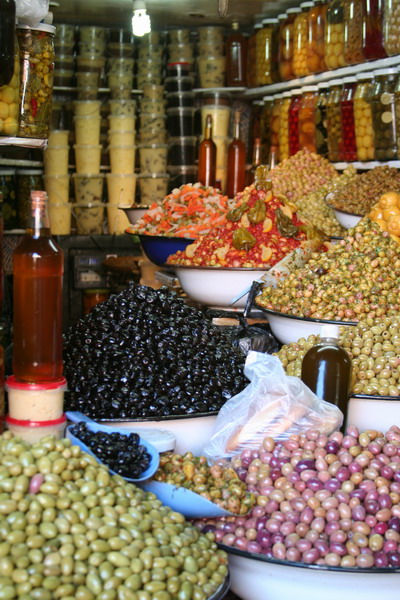
As you can see, there are a number of types of food available. Although we didn’t try the sheep’s brain, cooked in its own skull, we did enjoy some very tasty local fares.
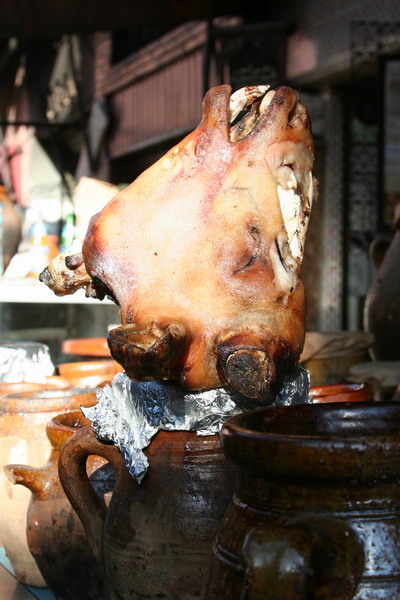
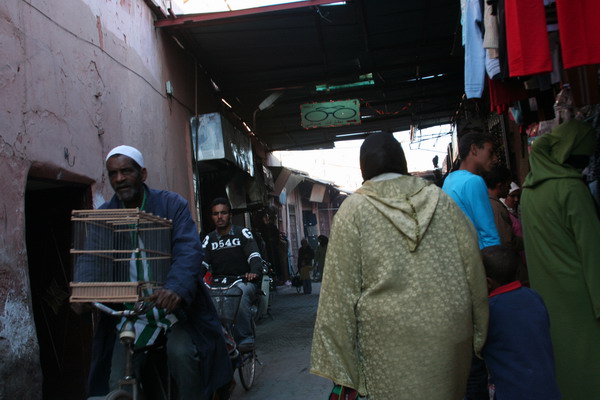
More tasty options for the adventurous palate.

This is the epicenter of the amazing street life … Djemaa el Fna.
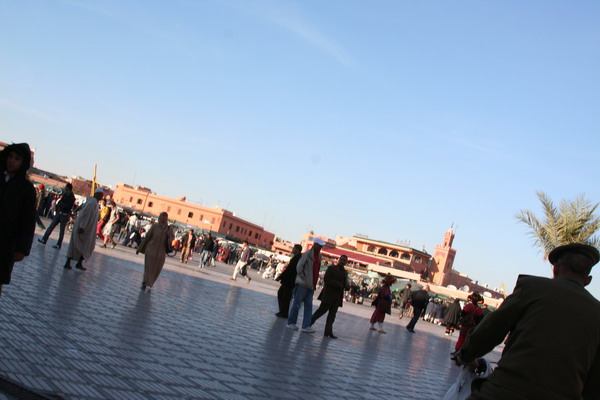
The square is filled with all kinds of people… fortune and story tellers, juice vendors, henna tattoo artists, ornately dressed water sellers, trained performing monkeys, and snake charmers.
These men were intently watching a snake charmer and his group of snakes.
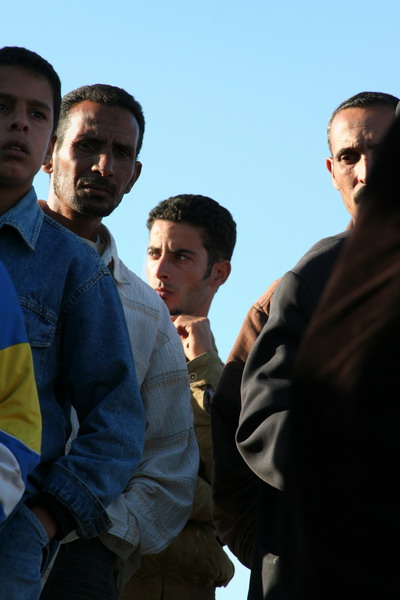
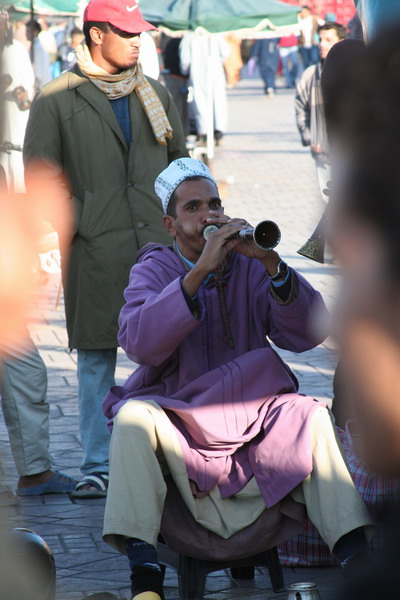
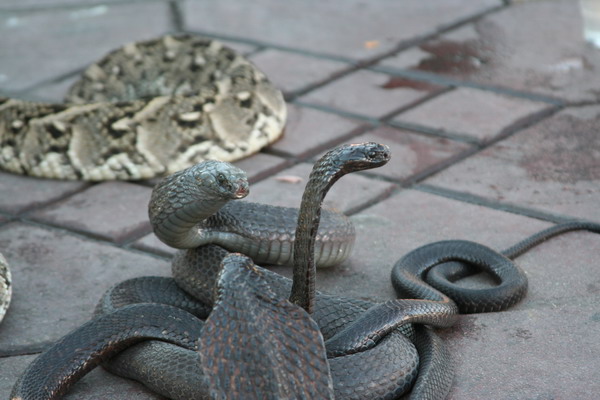
We also found out that as soon as you point a camera in their direction, these performers will immediately come ask for money (much like western street performers). So, of course, I offered a little compensation. Once I did that, I immediately became the focus.
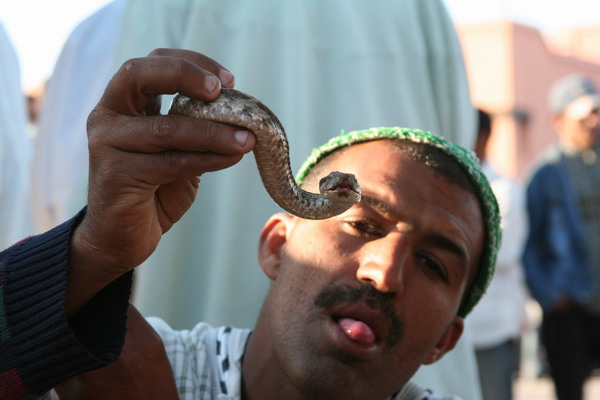
I heard these snakes have their mouthes sewn shut (or fangs removed), but nonetheless, they still looked the part and I saw no stitches (but no fangs either).
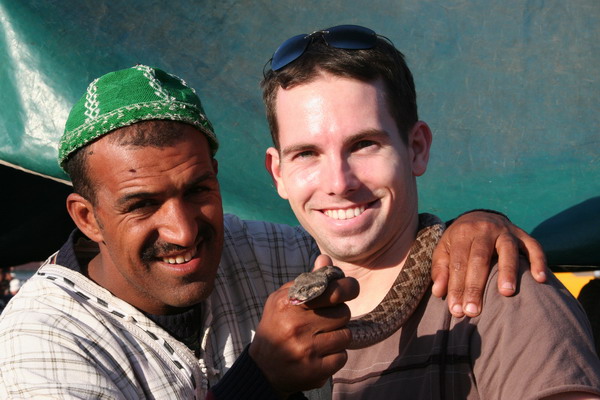
The snake charmer didn’t show any fear of this Egyptian Cobra, also known as Naja haje and reputed to be the method by which Cleopatra committed suicide.
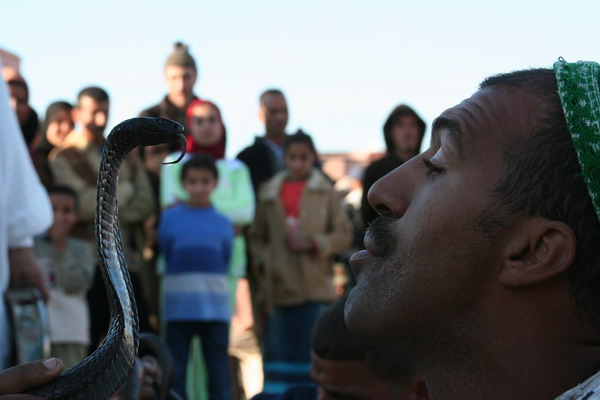
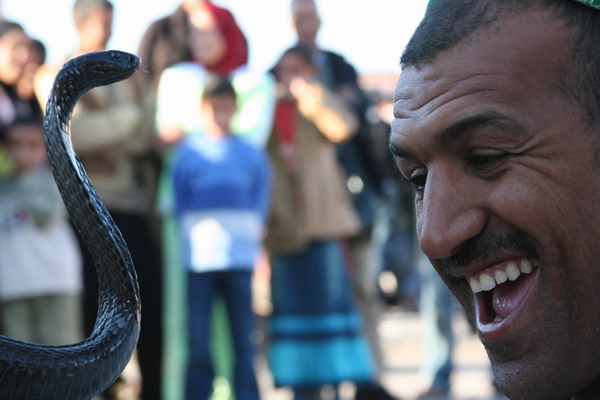
Perhaps the snake wasn’t quite as docile as this man thought. This was his reaction when the snake almost bit him.
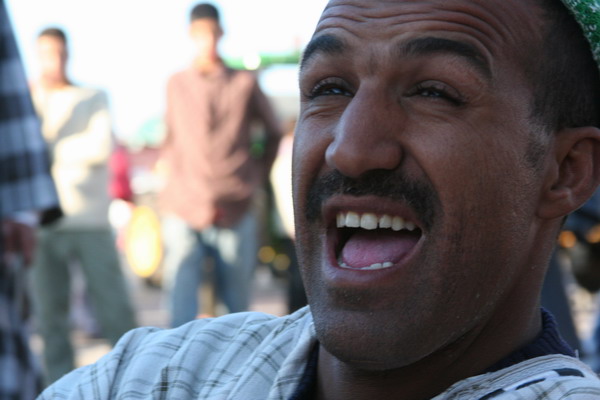
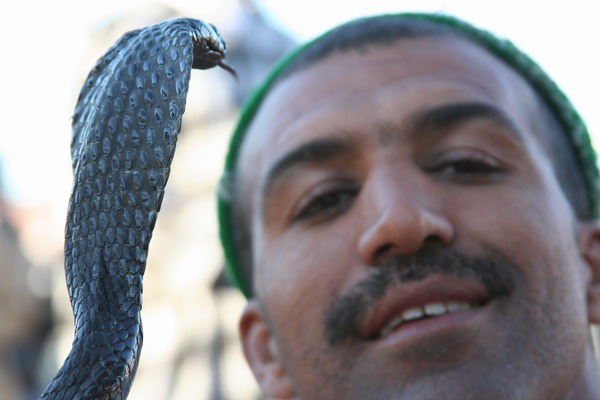
This one is probably my favorite image. This snake is very handsome and I wish I could have seen him in the wild. I know giving his charmer money promotes this destructive habit, but I guess I couldn’t help myself.
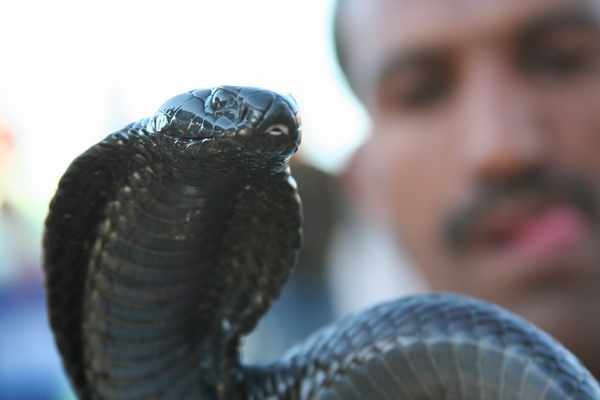
Here are a few more images of the Djemaa el Fna.
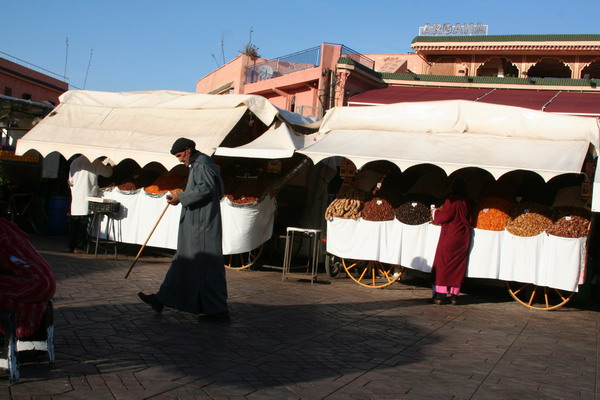
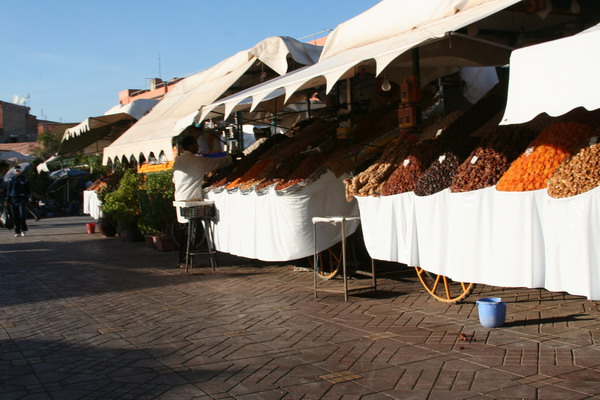
We also stopped for a quick break at this cafe, which also offered a great perspective on the market.
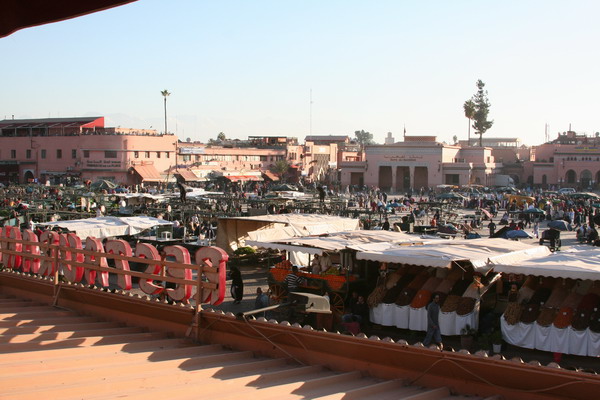
The real show happens when the sun goes down. Unfortunately, we had to leave and get back to the ship. So, all we got to see was the preparation for the nightly festivities.

There were people from all over as well.
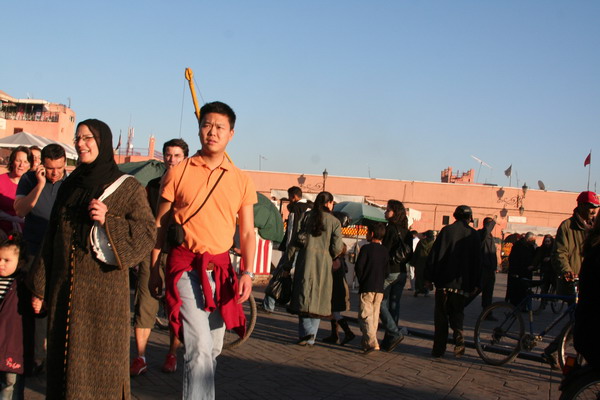
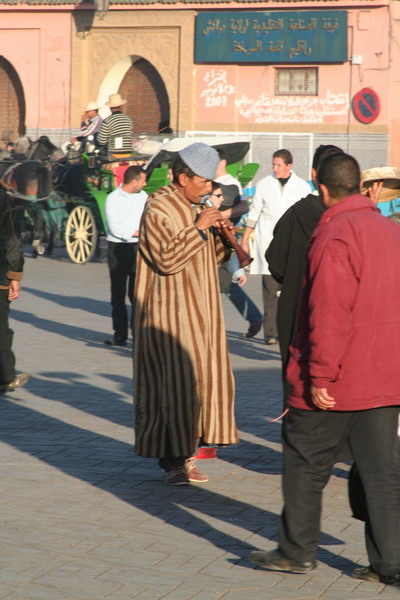
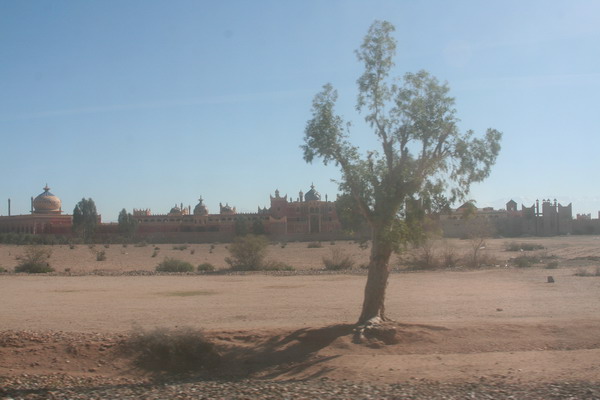
When we got back to Casablanca, we stopped by the Hassan II mosque. Here you can see its minaret, which is the world’s tallest at 210 meters.
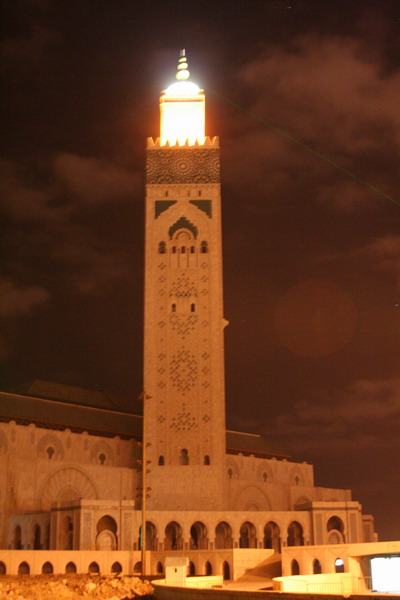
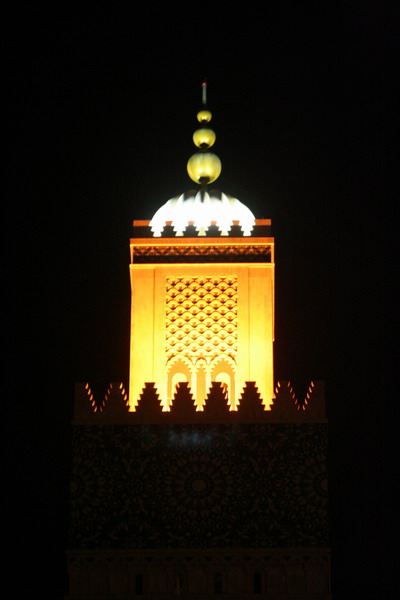
North Africa was something of a sensory overload, but it was without question our favorite stop on the whole trip.
Next up, the Canary and Madeira Islands.
So, until then…
–Jim
Cruising Part 1 — Italy & Spain
For our anniversary this year, we decided to take a longer journey than our usual weekend trip. After our honeymoon cruise, we planned to take a cruise every 5 years. I don’t know if we’ll keep it up, but we’ve kept the streak alive…
So, we set out on another journey. I have to admit, I was much more excited than I thought I was going to be. Another real adventure. Our first stop was only a few hours away in the Black Forest. But, we arrived at night and left before the sun. So, I don’t have any pictures to share. The best part was real spicy Thai food! Then, down to the tiny country of Liechtenstein for a lovely lunch.
Next, we stopped in the Italy Lake District of Como. This is the lake where a number of films have been made, most notably Star Wars Episode II (the scene of Padme and Anikan’s wedding on Naboo). We didn’t actually visit the Villa, but Lake Como is a great place to stay.
This is the view out of our hotel room.
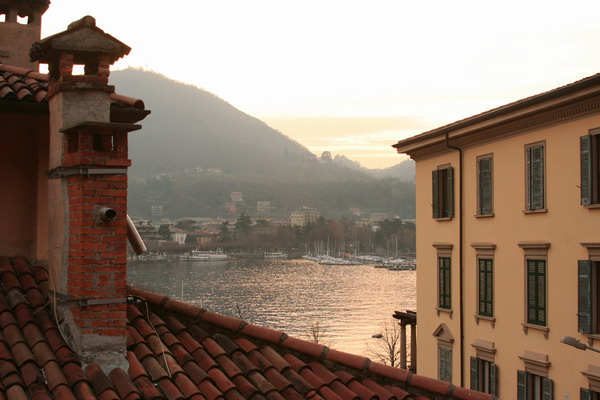
We also had a great time wandering the streets at night.

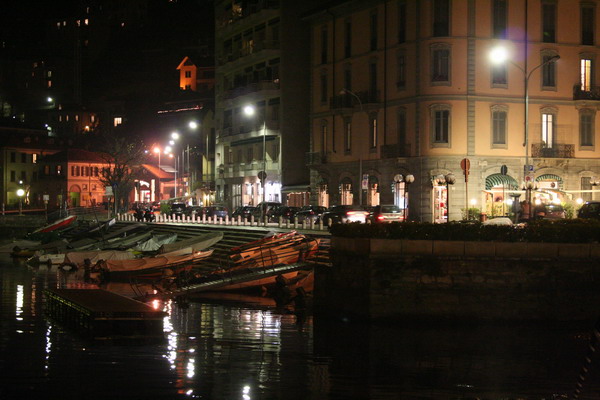
Sadly, the next morning, we had to continue on (although we plan to go back and visit the lake(s) again soon). The next stop was to the commercial and perennial fashion capital of the world, Milan, Italy. Our first art museum of the trip was at a converted Dominican Convent, Santa Maria delle Grazie. This unpretentious location was, like many important European buildings, severely damages in WWII. However, one wall was protected by sandbags and spared. That wall has the very famous painting, The Last Supper by Leonardo Da Vinci. Leonardo chose to use tempera, instead of fresco to create this masterpiece. Although it was an instant success because of the realism and emotion it conveyed, the paint did not share the same indelible quality that the painting had. So, although it was spared from falling bombs, gravity and humidity have wreaked greater havoc. Over the last 20 years, much more extensive work has been accomplished to try and stabilize/restore the artwork. However, this piece has always been controversial and the restoration has been no different. Unfortunately, like the fresco in the Vatican City, we were not allowed to take pictures. However, the Last Supper was the only piece to see and each group is only allowed 15 minutes… Oh, and you have to make reservations just to see it. Since the painting was prominently featured in “The Da Vinci” code, it has gotten a lot more attention. It was worth it though. A stunning piece of art with so much emotion and so much lost through the centuries, it’s fun to ponder just what it all means.
Then, we headed over to check out the main square and do a little shopping. After all, we were in a great place to find clothes.
This ornate shopping center is named after Victor Emmanuel II, who was the King of Italy. Interestingly, this is also one of the world’s first modern shopping malls (it was built in the 1860’s).
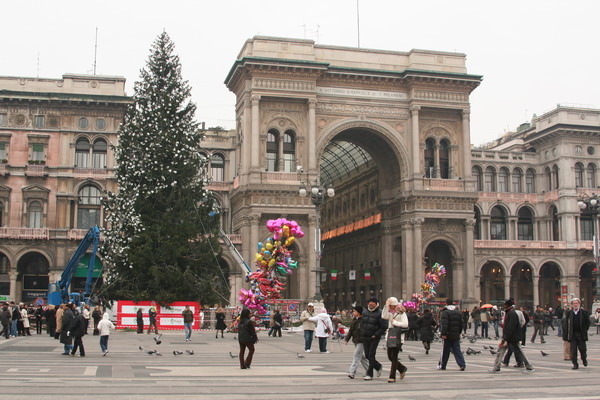
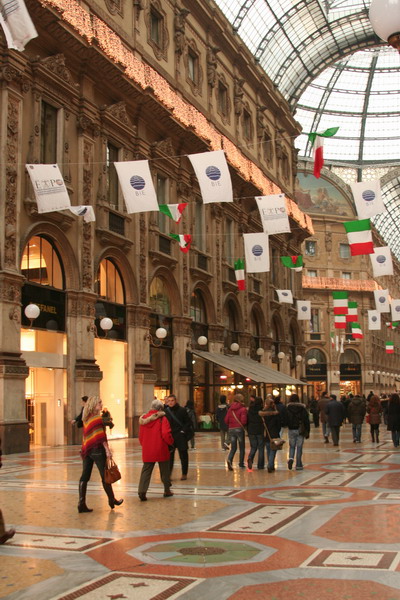
There were also Christmas markets setup around the main square.
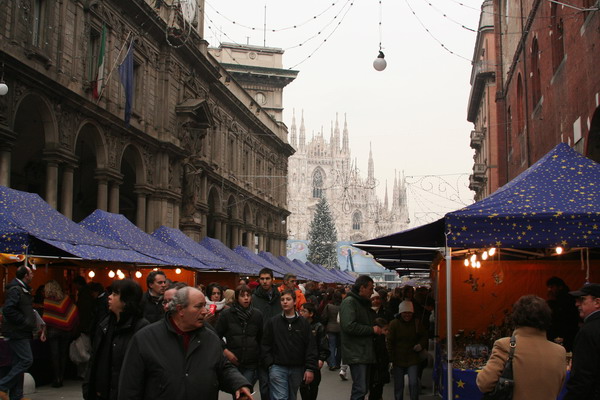
Here you can see the Duomo di Milano (or Milan Cathedral), which is the second largest church in Italy (second after St. Peter’s in Rome).
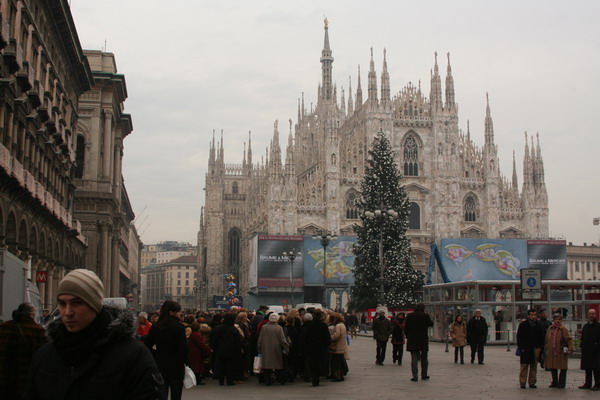
Although there weren’t nearly as many as St. Mark’s Square in Venice, there were plenty of pigeons here too. I chose this picture of Anna because you can clearly see just how much she likes it when birds land on her.
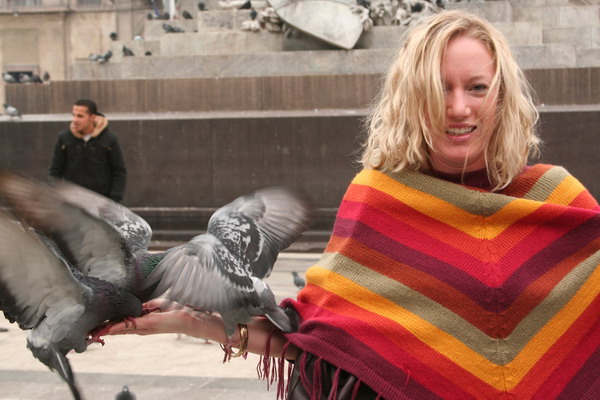
After that thrilling encounter, we continued our journey southward. It was in the port city of Savona that we met our floating city we called home for the next 10 days. The ship is truly a self sufficient city (for a while at least). It carries about 3,700 passengers complimented by over 1,000 crew, displaces 112,000 tonnes and is 950 feet long. One unique (and expected) aspect of cruising in Europe is that although many passengers and all the crew speak English, very few do so as a native speaker. Less than 7% of people on board spoke English as a first language. We found the blend of cultures very interesting. However, for meals, we were grouped by language spoken. So, our table of 5 couples included 8 Americans and 2 Australians. We really enjoyed our dinner conversations each night and every one had such varied and interesting stories, it made for fascinating evenings.
Although the ship cost 450 million Euros to construct, and millions were spent on the 6,000 works of art, the thematic elements were often conflicting and often over-the-top. To give you an idea, here are a few pictures.
This is “L’Olimpo Spattacoloso” (Spectacular Olympus), with 16 “Sculpture Costumes” by Alberto Nodolini. Unfortunately, these sculptures look a lot like department store mannequins…
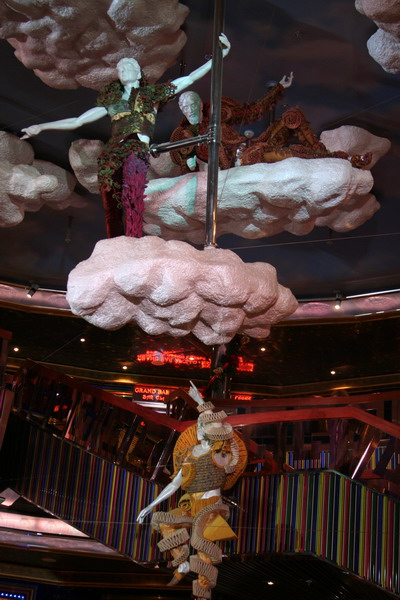
One redeeming design factor is the fact that there are four pools and a bunch of whirlpools. The pools were filled with refreshing sea water and with the sway of the boat got some nice sized waves. It made for an interesting swim.

There are also two large dining rooms, and each one offered an early and late seating. This is what the one we ate at looked like.
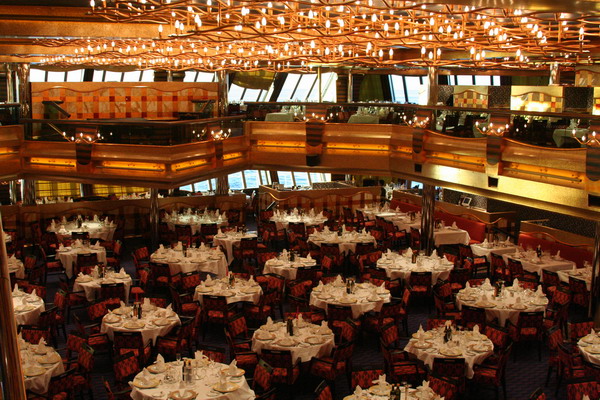
Here is a little more of that gaudy decorating.
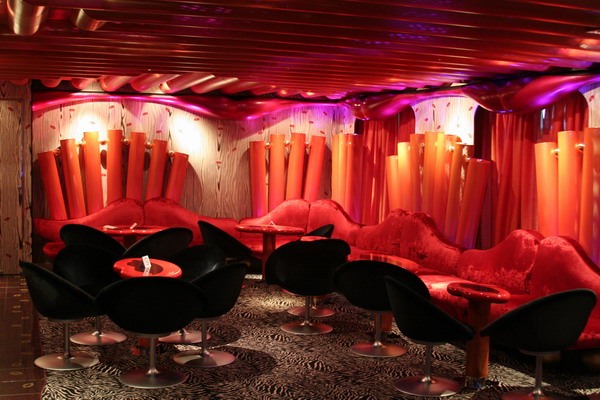
These two musicians played every evening and although I wasn’t impressed with the quality of their music at first, I came to appreciate it. Plus, we were often the only audience in attendance. This is from one of the formal evenings where they played for the whole dining room.
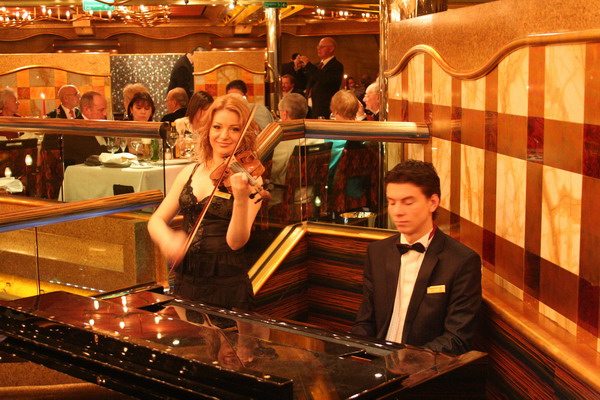
The food itself was nothing to write home about (although in a sense I am doing that right now), but the service was excellent.
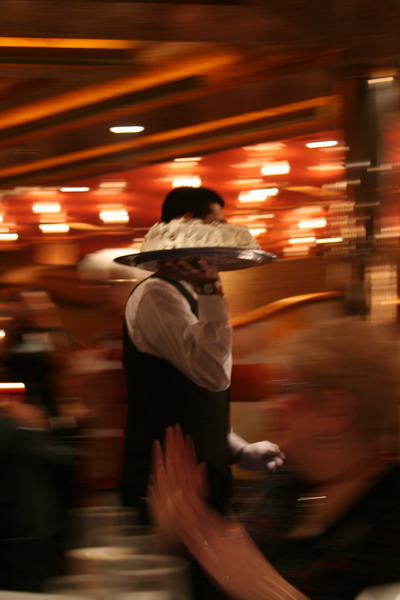
Finally, this is our stateroom. It was about 220 square feet and about twice the size of our last cruise ship room. Plus, there was a window this time. Consequently, we spent a lot of time just hanging out in our room. Of the 10 days, there were 4 days at sea. This was a welcomed, forced relaxation time. We had breakfast delivered to our room, often read for a while, watched movies (on the laptop), or just sat and watched the ocean. When we wanted a different view, we would go for a swim, sit in the whirlpool, or go for a run on the treadmill. Since we are planning on running a marathon in April (with Jen), we have already started our training regimen. That called for a couple long runs (8 and 10 miles). Which meant that we had a long time on the treadmill as the ship rocked and swayed beneath us. OK, Anna did pretty well, but I nearly fell off a couple times.
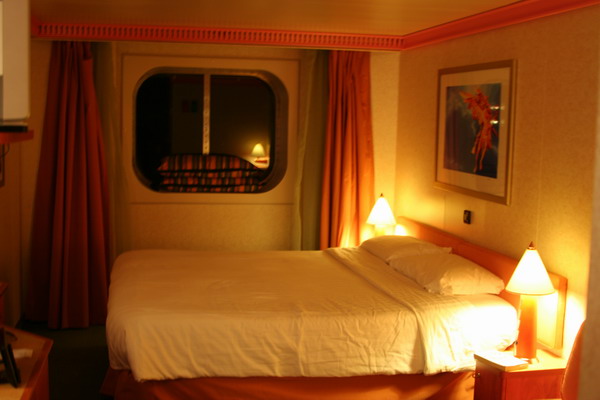
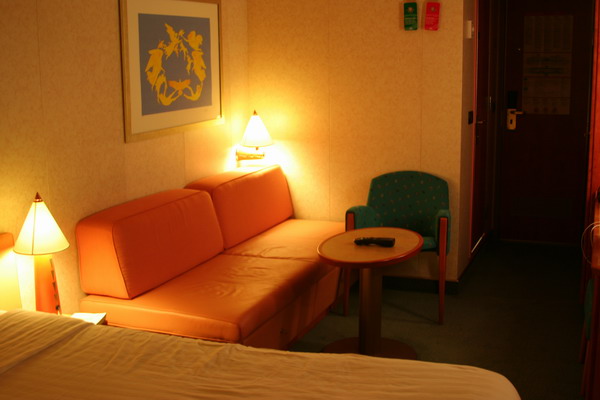
After getting settled and acquainted with our new friends at dinner, we had a very restful night’s sleep. The next morning, we awoke to the sunny city of Barcelona. We only had a matter of hours in the city, so we decided on a whirlwind tour. The ship offered a convenient shuttle to the start of Las Ramblas, the famous thoroughfare through the center of the city. It was lined with more vendors and human “statues” than we’d seen in a while. Still not sure what the point of dressing up in a costume and standing motionless for hours, while hoping that passing people toss money your way, will accomplish…
After a lovely stroll, we hopped on the subway and headed to see a few works of the city’s most famous architect, Antonio Gaudi (also interesting that we found the ships decoration gaudy, but apparently the word/name aren’t related).
The first stop was to an apartment called Casa Batlló (so named for the owner, Josep Batlló Casanovas). It was built in 1875, but in 1904 Gaudi was commissioned to renovate it. He turned it into the work of art we saw. Here are a couple images from the exterior.

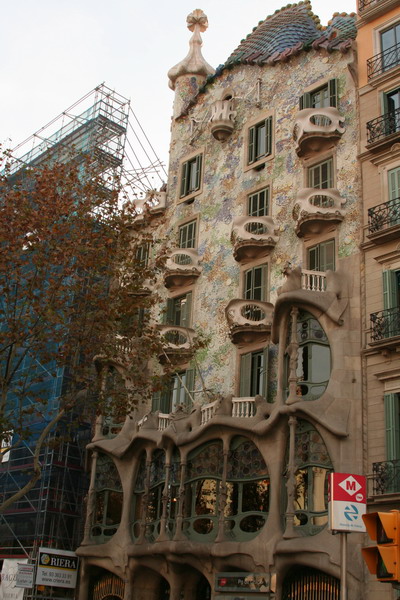
Just up the road we also found Casa Milà, or as it’s better known, La Pedrera. This was a house Gaudi built from 1905-1907 for Roger Segimon de Milà and there is a large section of the building that has been kept (or re-created) to be just as it was when first built. From an infrastructure perspective, I found it fascinating … the electric lines and plumbing were just as it would have been 100 years ago.
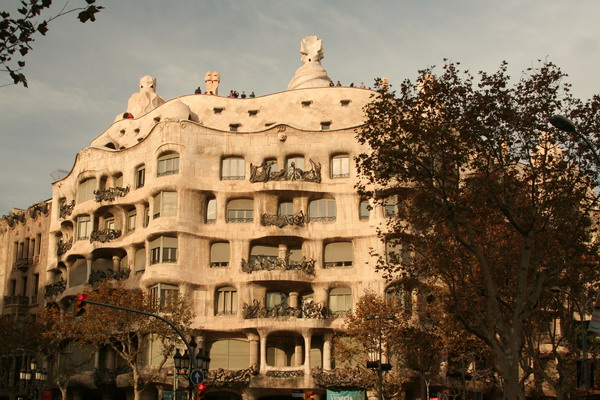
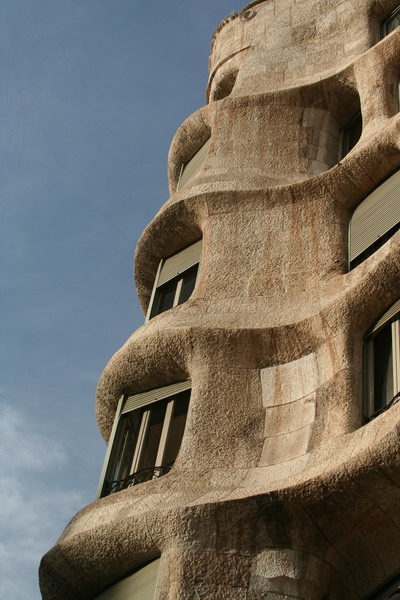
This is an image from the roof.
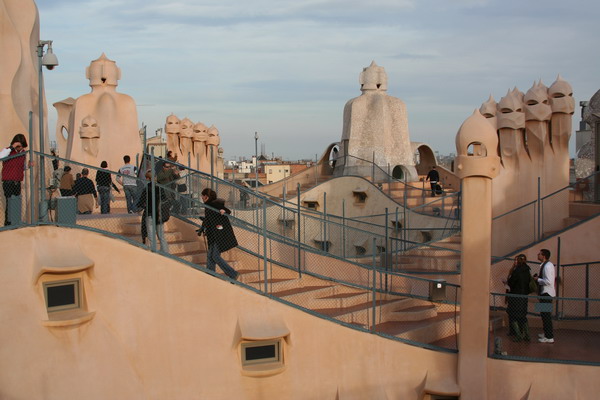
She’s famous…
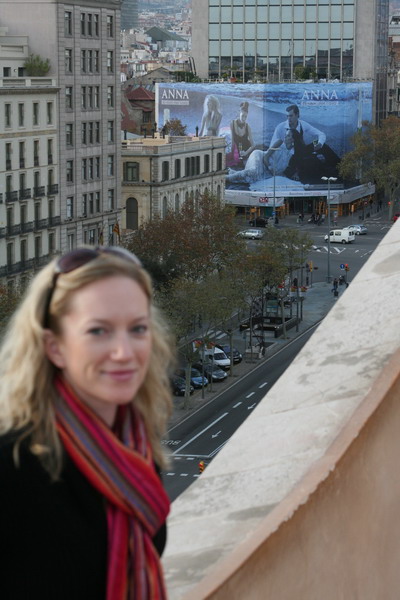
Here is Anna with arguably Guadi’s most famous work, La Sagrada Familia, which was the next stop on our itinerary.
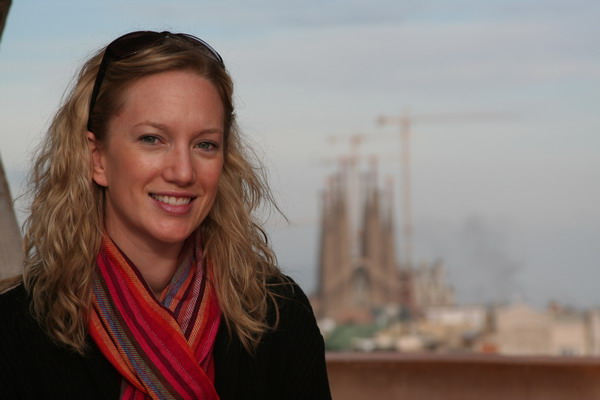
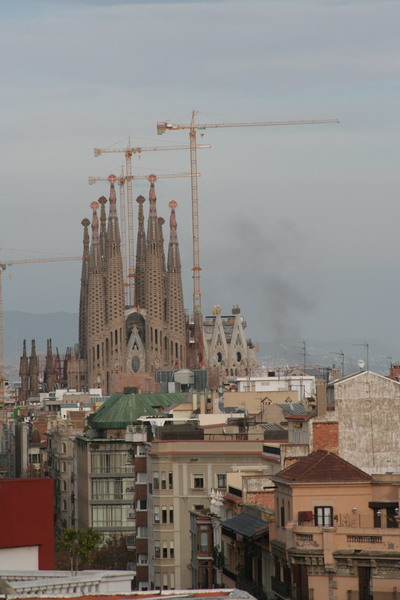
Here are a few more close up of perhaps the most famous incomplete building in the world. It’s construction was begun in the second half of the 19th century and will probably not be complete until the middle of this century (at the soonest). The work continues by donation and some two million annual visitor ticket sales. So, we did our part to aid the construction with the tickets we bought.


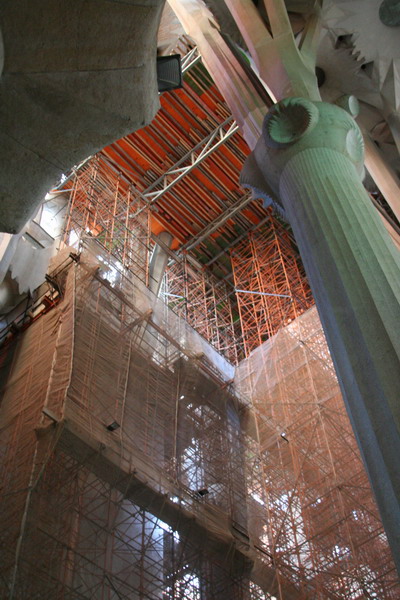
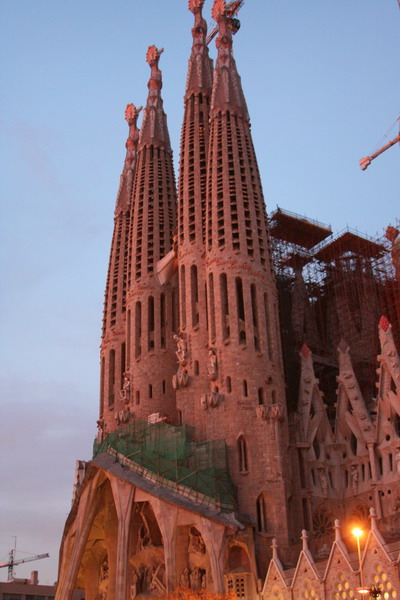
That finished our all too brief tour of Barcelona. We jumped back on board and headed out to sea again. Next stop … North Africa!
So, until then.
–Jim
Republic of Ireland
Ireland is an island of amazing beauty and color. Even in winter (or almost winter), as the saying goes, Ireland has 40 shades of green.
We began our voyage in Dublin, where we rented a car, got used to driving on the left side of the road (and shifting with the left hand). Our first stop was to the National Museum. This provided a stunning overview of the land we were about to tour. I thought the most impressive section was the gold work from the Bronze Age. These works of art would be impressive in any age, but the fact that these are 4,000 years old made them amazing. Equally amazing are the human remains and clothing that has been found in the peat bogs throughout the country. The environmental conditions are perfect to preserve delicate textiles (or bodies) from centuries gone by. It seemed to be a clearer view into a bygone time than the preserved bodies of ancient Egypt.
In fact, the clothes were the key. They were ordinary woolen garments used in everyday life. They weren’t regal or special (and therefore warrant preservation), but simply the clothes that people from the time wore.
After our improved understanding of Ireland and its history, we headed out to the countryside.
Across the island are the breath-taking Cliffs of Moher. Rising sharply out of the ocean to a height of 700 feet (or 214 meters), they make a dramatic point to behold.
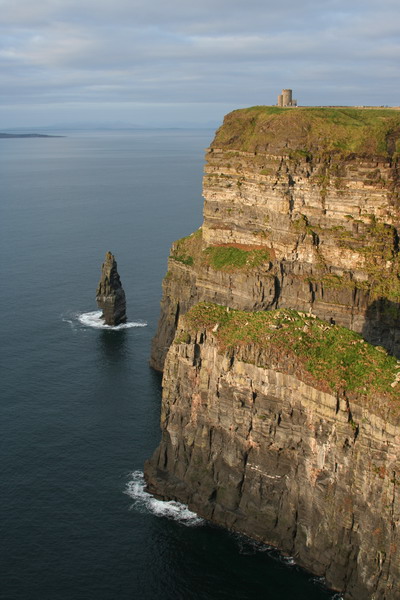
We walked for a significant portion of the 8 kilometers (OK, not the whole length, but a long way nonetheless).
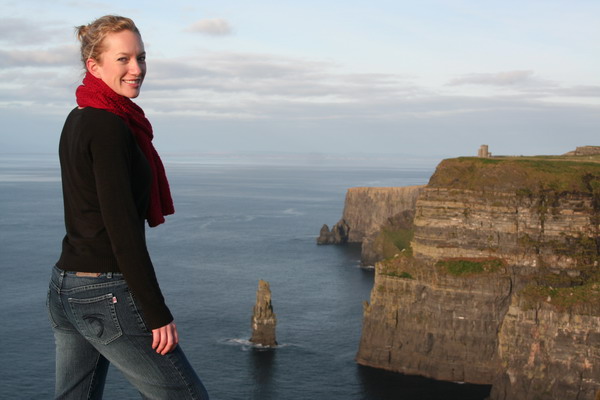
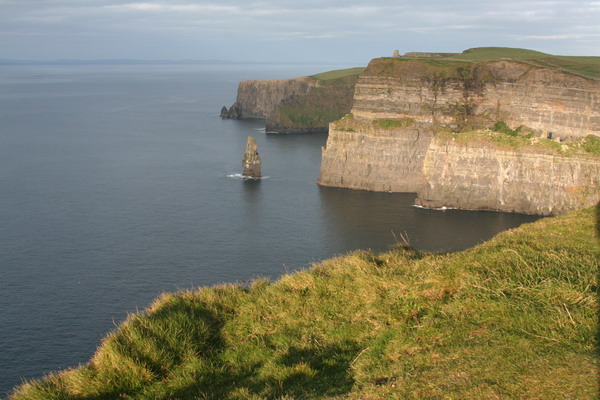
We looked over the edge, just to see what butterflies would appear…
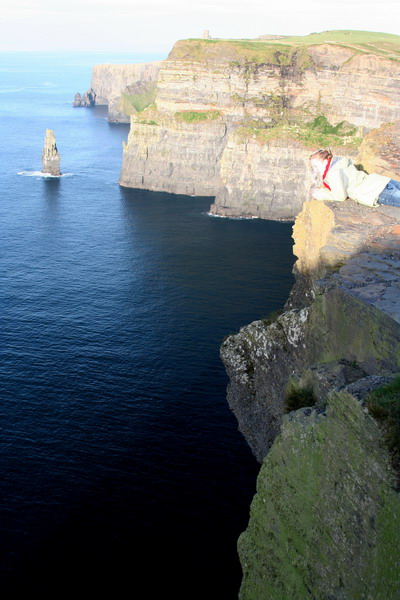
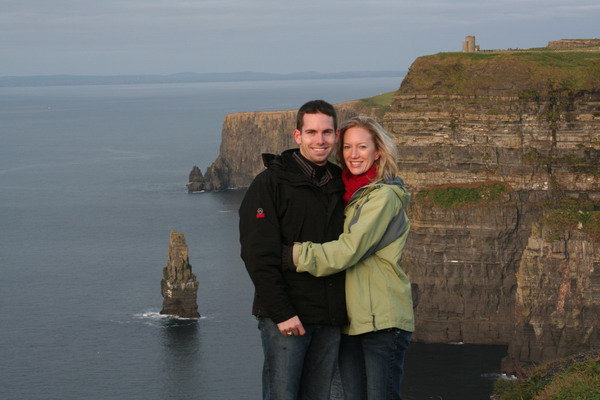
We stayed there so long that the sun began to set.
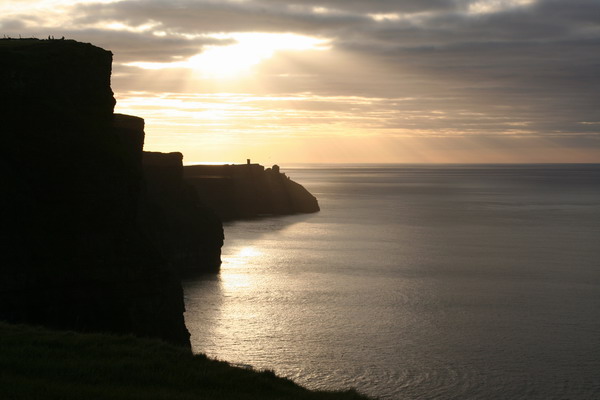
Then, we turned south and headed for the Dingle Peninsula.
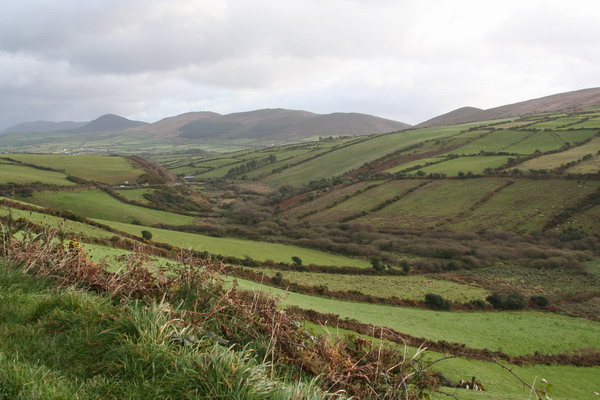
Since the peninsula is pretty small, and the most scenic route only about 30 miles (50 kilometers)long, we decided to rent a couple bikes and ride the route to feel a little closer to the land.
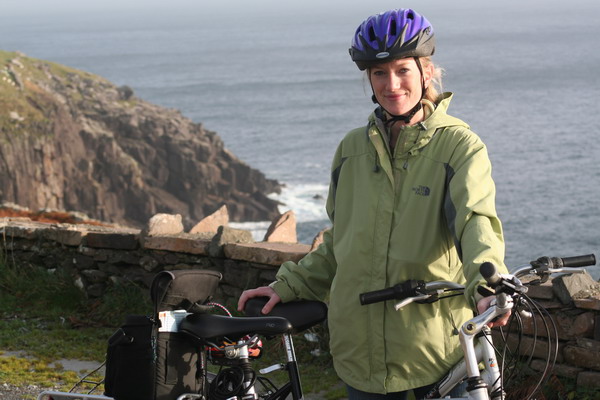
The architecture and landscape were both very rugged. Built to last harsh conditions for hundreds or thousands of year (which in some cases has already happened).
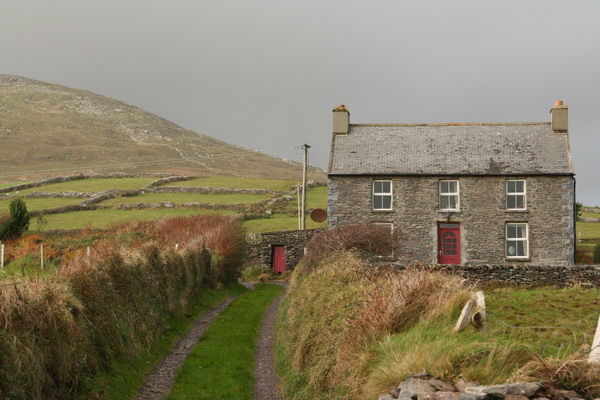
Although not as famous or sheer as the Cliffs of Moher, this coastline was very scenic as well.
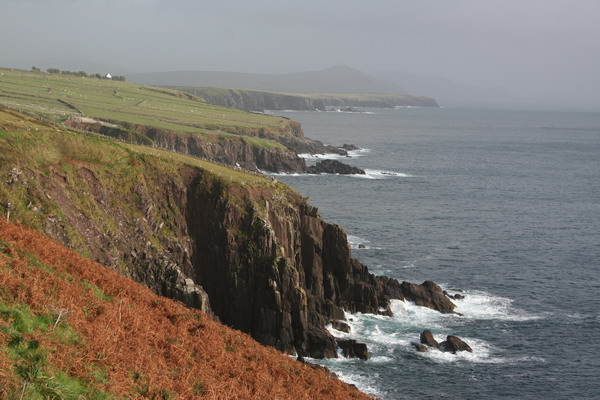
While there weren’t many people on the ride, there were lots of sheep. Here’s an interesting fact about the mountain on which this sheep is standing. On May 20th, 1927, at about 3PM local, this was the first land Charles Lindbergh saw on his historic transatlantic flight.
Of course, the sheep could care less…
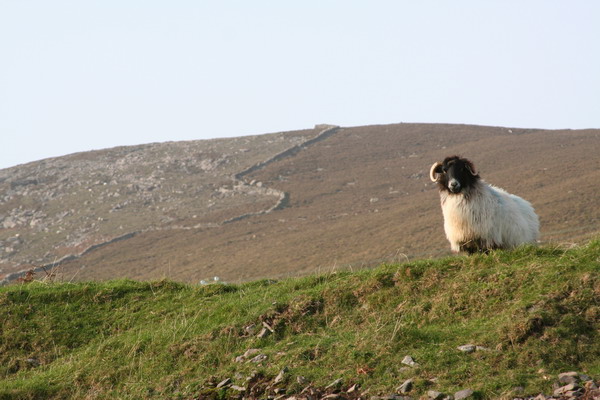
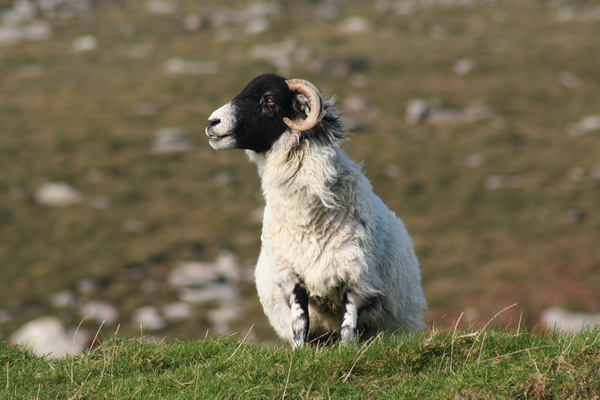
On this, the far western edge of Europe, the landscape got more and more rugged.
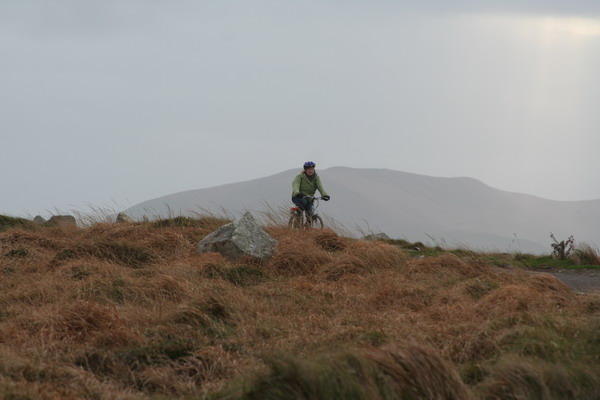
The three peaks in the background are fittingly named the Three Sisters.

Another highlight of the trip was our stay at the Kinnitty Castle. Back in 2004 when Anna visited Ireland with her Mom, my Mom and my sister, they stayed at this ancient castle. She fell in love with it, so this time, we decided to stay there together. It was my first time staying in a castle and it was quite an experience.
The castle was originally built in 1209, but has been highly modified over the centuries. But, in 1811 it took on the form that it is today (well, mostly at least) and sits on 10,000 acres of land.
As a bit of a break from the norm, here are a few images from our room.
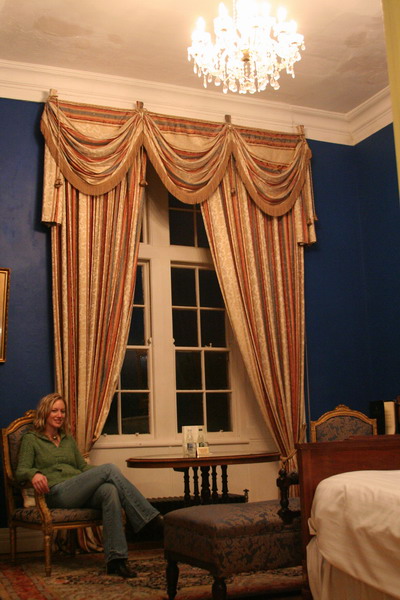
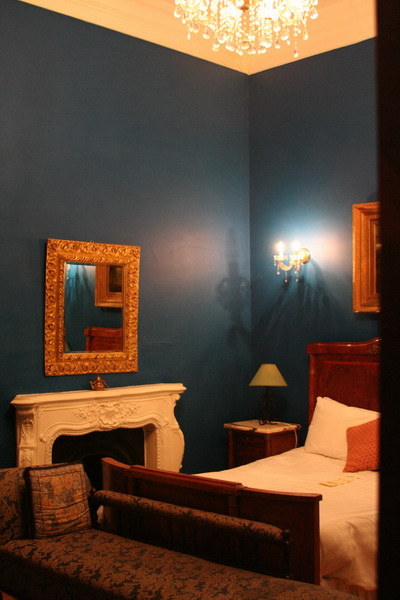
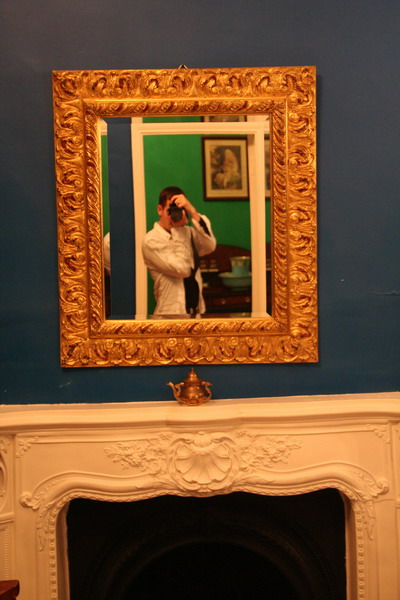
This is truly a “bath”room.
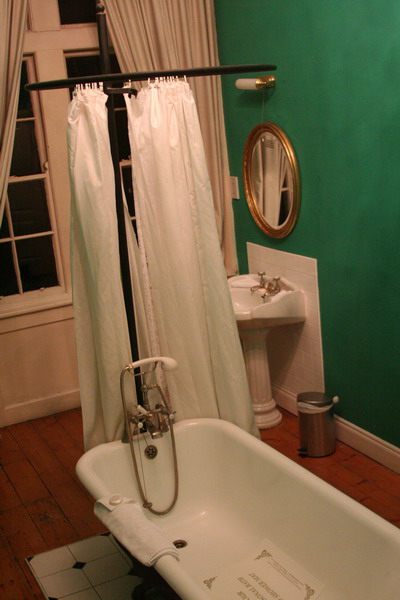
Even the bar is romantic. It’s set in a library with candles to add to the atmosphere.
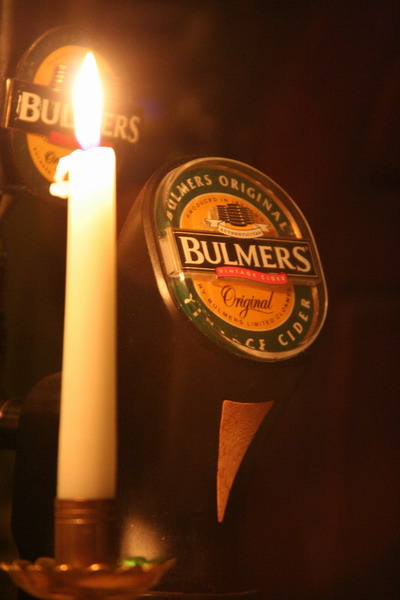
The dinner was one of the best we’ve had. Everything in the castle was perfect. Exactly what we expected. If you happen to be in the Irish midlands, we highly recommend staying at this magnificent location.
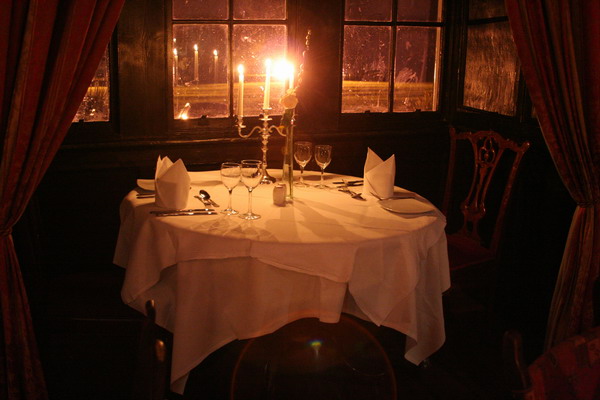
The next destination was the Burren. It’s renowned for being rather desolate. However, it’s full of archaeological sites. In fact, this one is a portal dolmen and grave site used by people of the region approximately 5-6,000 years ago (the Neolithic era). When it was excavated in the 1980’s, they found about 30 bodies from that time period. The also found a woman from the Bronze Age (4,000 years ago) buried just outside the entrance.
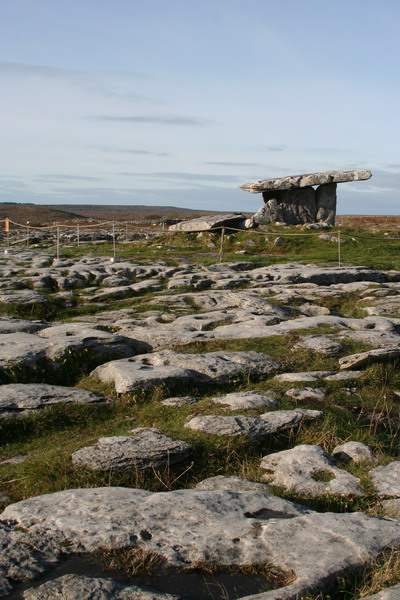
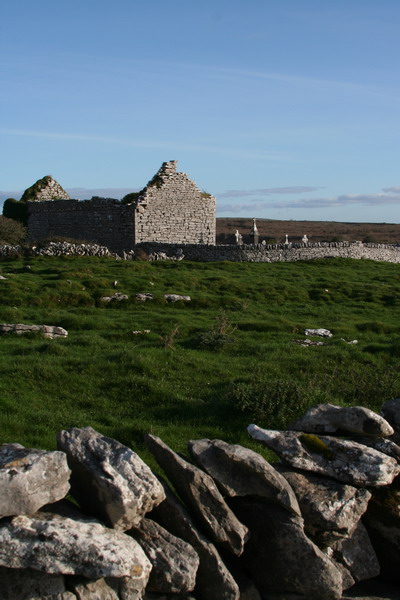
This is the weather we expected to see our whole time. Although it’s not as pleasant to be walking in, it is certainly very pretty.
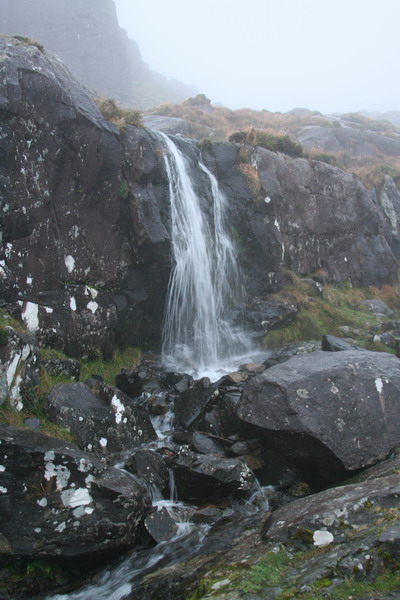
This mountain road in Dingle may give you some idea of the roads and climate. I’ve already mentioned the weather a couple times, but the roads were … a little small. This one is barely wide enough for a single car, let alone 2 buses passing next to each other. The road is very much a shared commodity. Drivers were very courteous and would pull over to let another driver pass by. So, once you are accustomed to driving on the left with little or no room between you, the rock wall and the cars zipping along, driving in Ireland is a breeze. Oh, and did I mention the road conditions are usually somewhere between fair and poor?
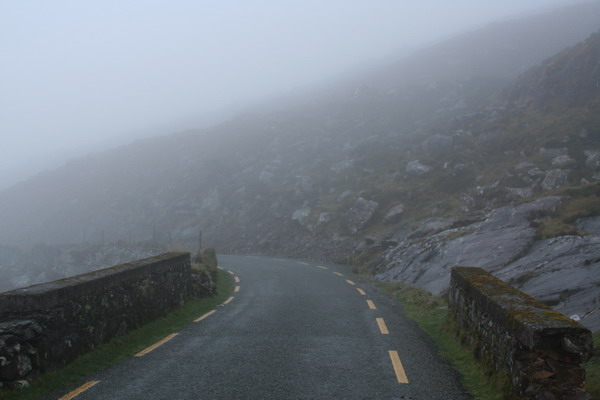
OK OK, so the driving wasn’t that bad (there are many places it is much worse).
This was another great adventure for us. We loved the people, landscape and history of this island. We look forward to returning.
So, until then…
–Jim
Würzburg with friends/family
Last weekend we went to visit our good friends, Gabi and Philipp (Gabi is Anna’s German sister who you may recall from earlier posts), at their home in Würzburg. They both go to school at the university there and were kind enough to show us a little of their city.
Even though the weather wasn’t the best, it is still a beautiful city.
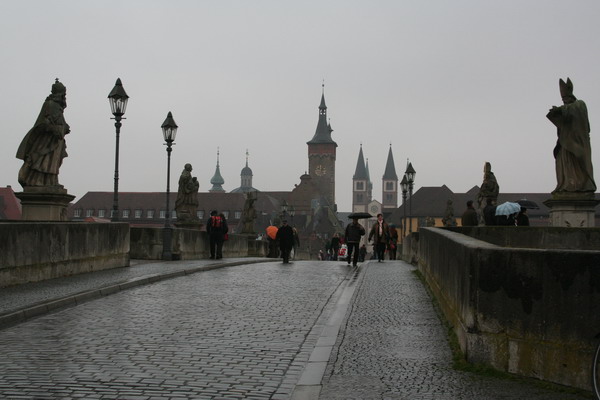
Probably the most famous site is spectacular, baroque Würzburg Residenz. It was designed and built in the mid-eighteenth century to rival the other great palaces of the time, like the French Château at Versailles.
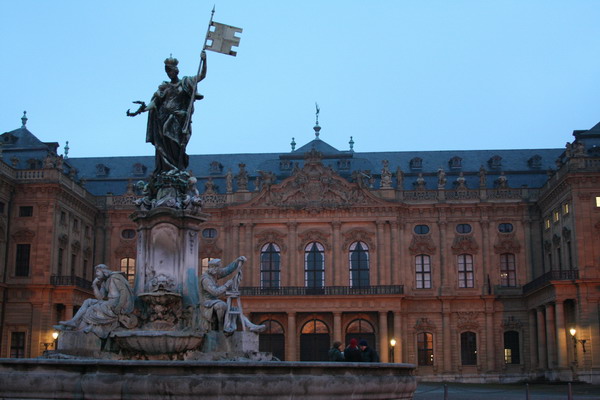
Although we couldn’t take pictures inside, it was amazing. The grand entrance is a staircase that greeted visiting dignitaries to a massive art display. It was a frescoed ceiling that was 18 by 30 meters and completely unsupported by columns or pillars. In fact, it even survived the bombings of WWII that destroyed 90% of the city (and the rest of the Residenz).
Also, there was a room inside that was built to amaze visitors. It was covered by mirrors, gilt figures, and Murano glass work. Unfortunately, it too was destroyed in the fire that consumed the building, but after spending nearly 4 million Euros, it was restored to its original brilliance. That was my favorite room and apart from the lack of historical significance, it was more impressive (albeit smaller) than the Hall of Mirrors in Versailles.
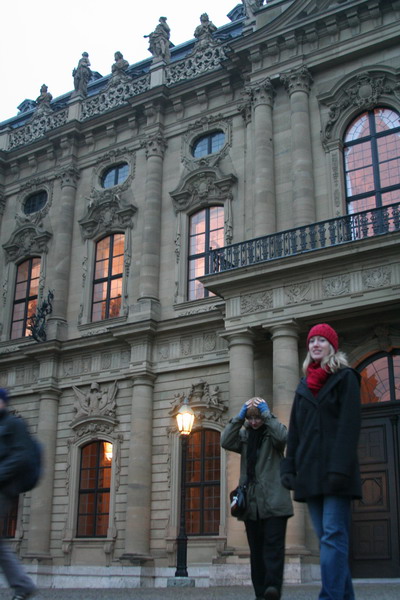
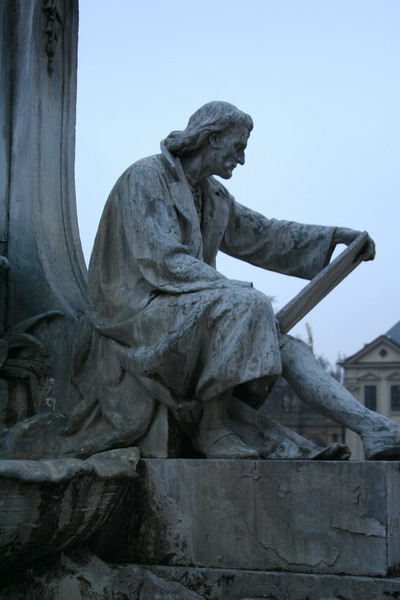
You can see the Marienberg Fortress in the distance.
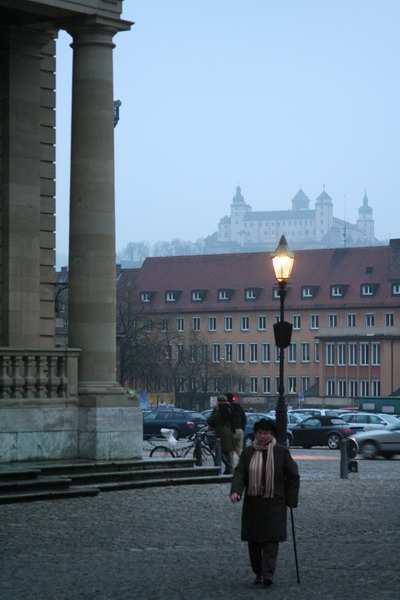
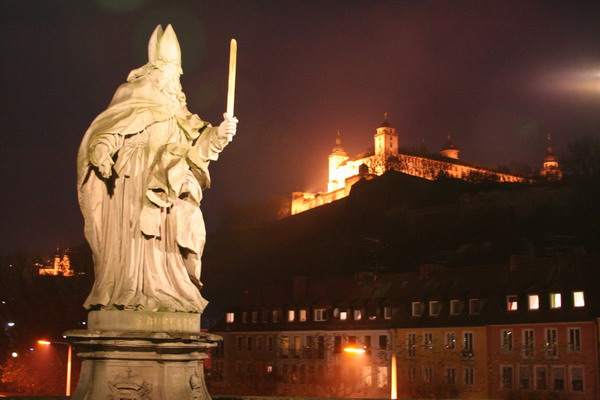
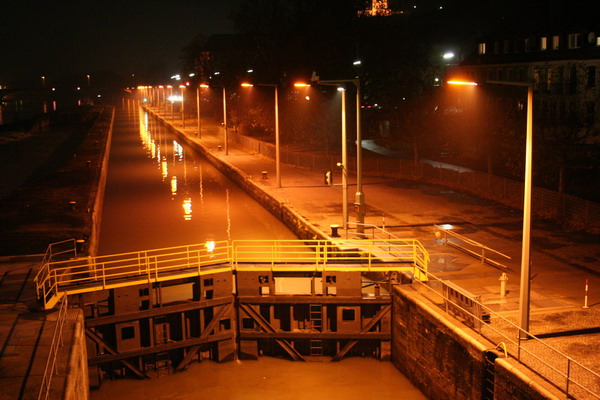
These are a few images from the Marienberg Fortress.

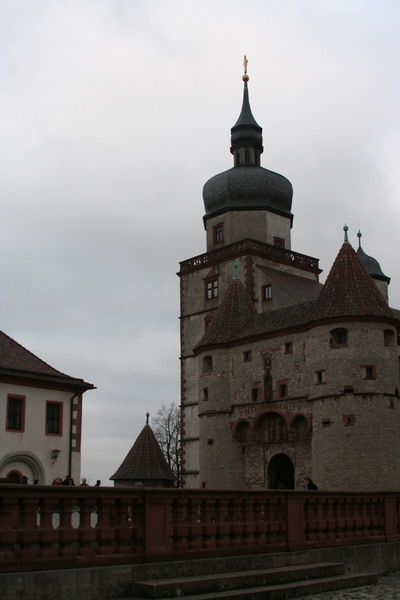
Here is Gabi and Anna catching up.
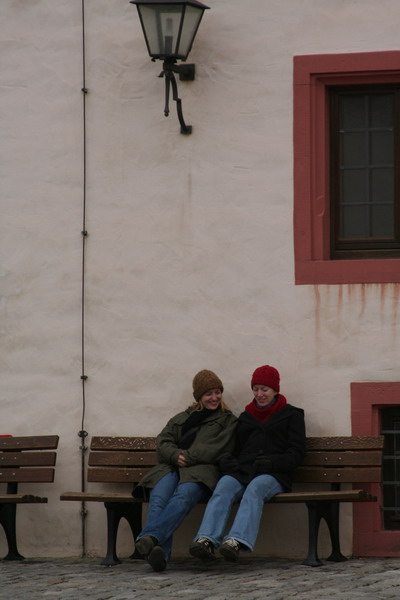
It was very enjoyable, relaxing weekend. We love spending time with them.
So, until the next adventure…
–Jim
London
For Veteran’s Day weekend this year, we decided a short trip to London was in order. So, we hopped on a flight to meet both my parents for a long weekend (yes, they had a much longer flight).
This trip was as much about hanging out with my parents as it was sight seeing. However, we still got to see a lot of fascinating sites.
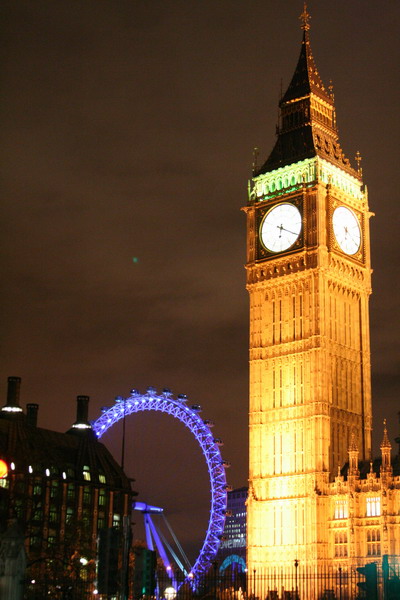
We loved traveling on the tube. It’s one of the easiest public transportation systems we’ve used.
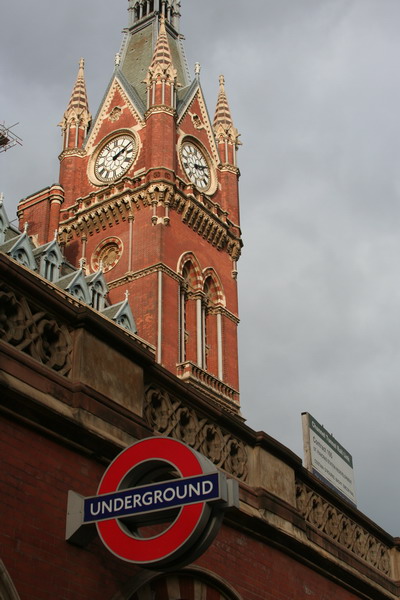
Since Anna and I have read all the Harry Potter books (and seen all the movies for that matter), we decided to pay due homage. We took a pilgrimage to King’s Cross Station in search of platform 9 and 3/4. The trials and tribulations that Harry experienced at Hogwarts School of Witchcraft and Wizardry all started here, on the invisible platform between platforms 9 and 10 that led to the Hogwarts Express train. Unfortunately, there is nothing actually between tracks 9 and 10. But, the rail service was kind enough to indulge us tourists with a luggage cart that is halfway through the magical portal.
Hogwarts, here comes Anna!
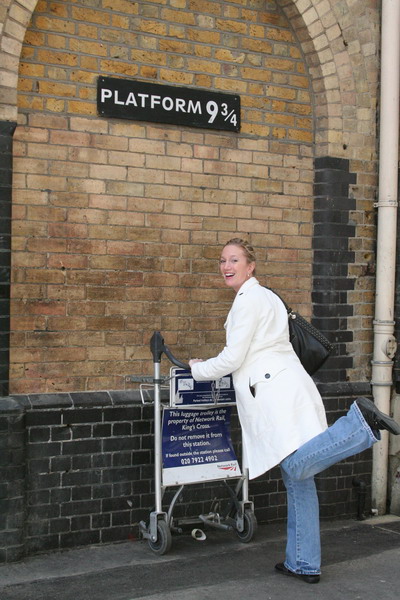
We had the opportunity to visit a number of museums on this trip. My personal favorite was the British Museum. If you can overlook the questionable ethics that acquiring this collection required, it is truly spectacular. In fact, it seemed to be an encyclopedia come to life. It’s huge though, so we focused on the big empires of the past: Egypt, Assyria and Greece. The first piece as you walk through the door is appropriately the Rosetta Stone. This is one of the spoils of Napoleon’s conquest of Egypt in the late 18th century. His engineers uncovered this massive stone and realized its significance. It has the same text translated in three languages, Greek, the common Egyptian language, and most importantly hieroglyphics. That was the key to re-discovering the meaning of all those symbols…
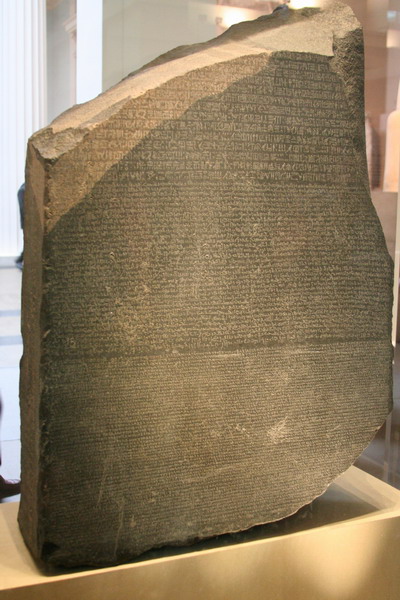
The text was from the time of Ptolemy in the second century BC.
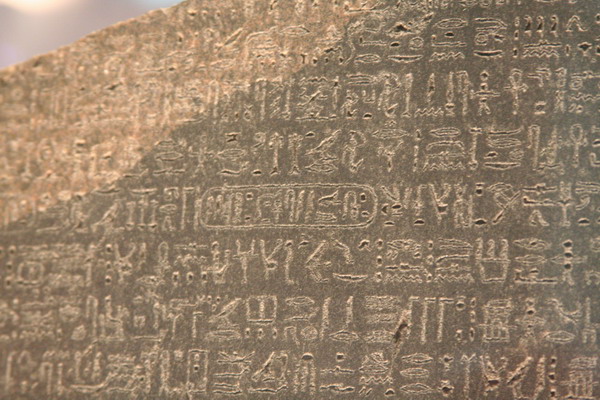
This first image is what a common person looked like after being buried for 2,000 years.
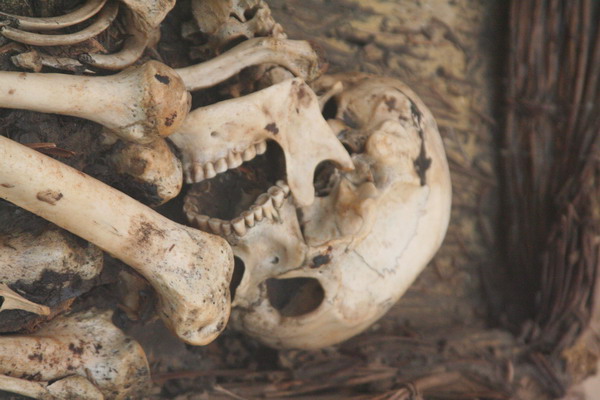
This is Ginger (so called for the wisps of red hair). He is 2,500 years old. Although not a mummy in the traditional sense, he is incredibly well preserved. When he was buried, the wind, heat and dry desert climate all served to protect him.
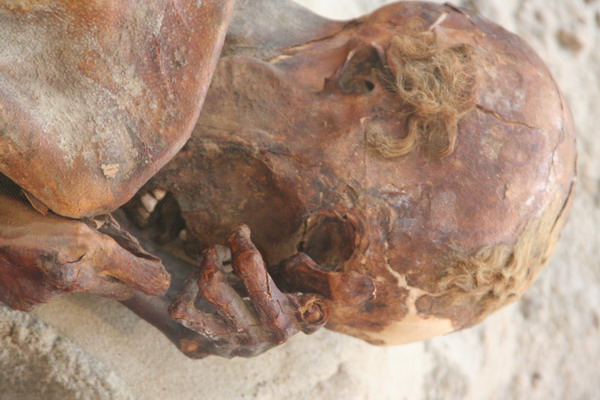
These are pieces from the Elgin Marbles that originally decorated the Parthenon in Athens. Thomas Bruce, 7th Earl of Elgin, the British ambassador to the Ottoman Empire from 1799 to 1803 asked permission to remove a number of pieces from the deteriorating building and bring them back to London. Permission was granted by the Ottoman Empire, and Lord Elgin brought back a number of pieces, including this 247 foot section of a frieze.
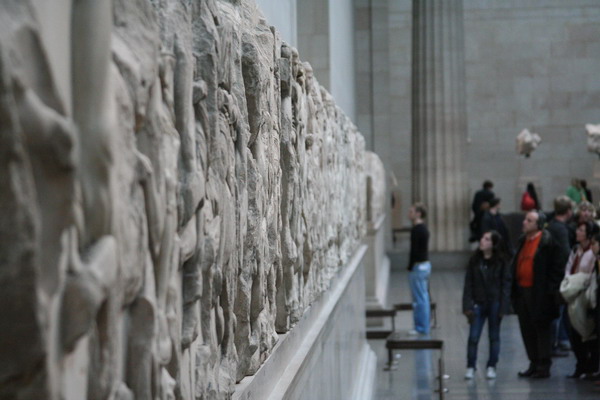
This statue from Easter Island is known as Hoa Hakananai’a (probably ‘Stolen’ or ‘hidden friend’) and was found in a stone house at Orongo, the center of a birdman cult.
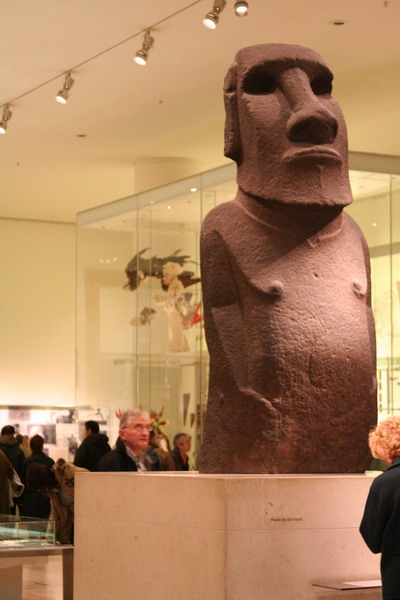
Since we were there for Veteran’s Day (or Remembrance Day in the UK), we went to watch the royal celebration at the Cenotaph. As you can see, there was lots of patriotism in the air.

Of course, the crowds were giant.
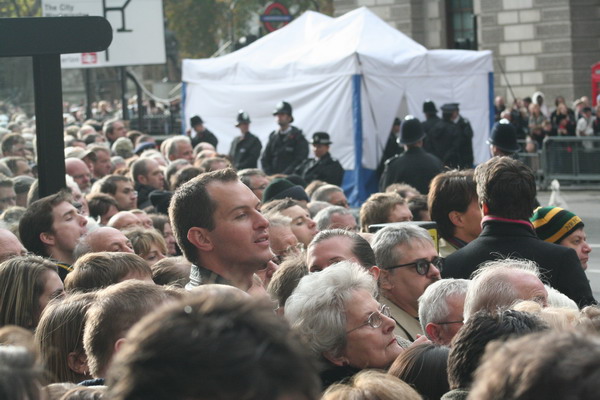
There were 8,000 veterans who represented all the conflicts of the last century.
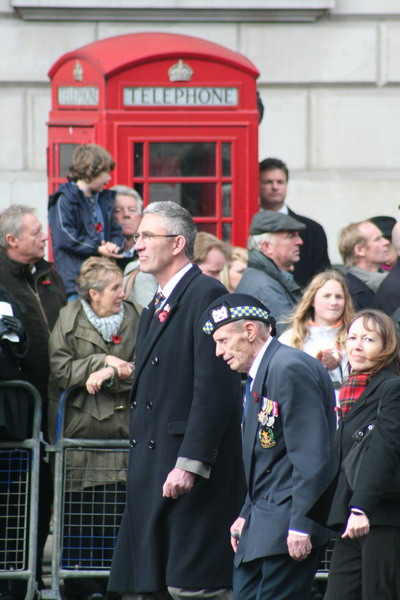
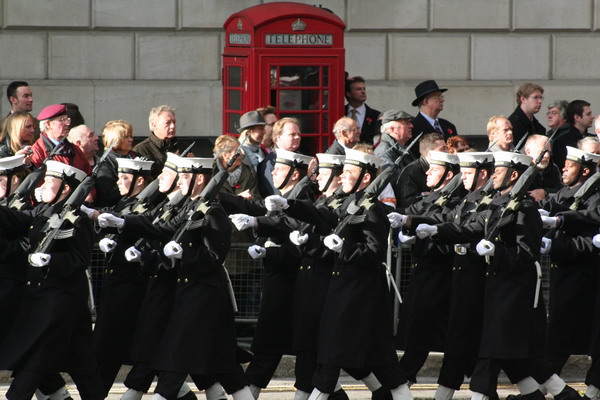
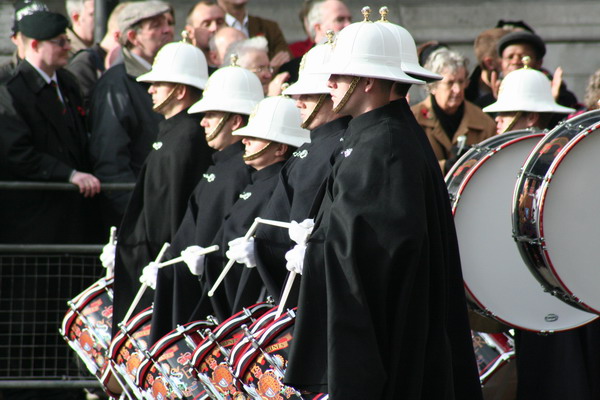
This is the cenotaph where everyone marched past and the royal family (and other dignitaries) laid their wreaths.
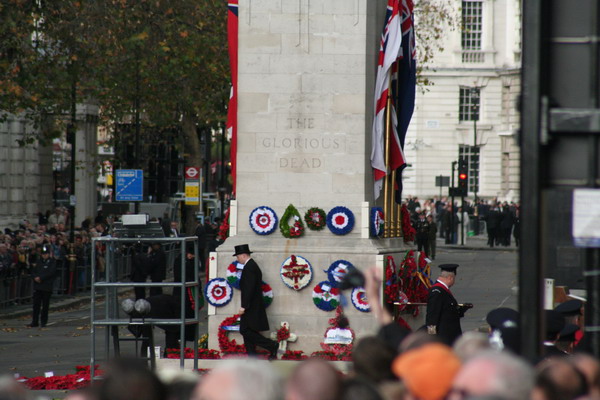
The Horse Guards.
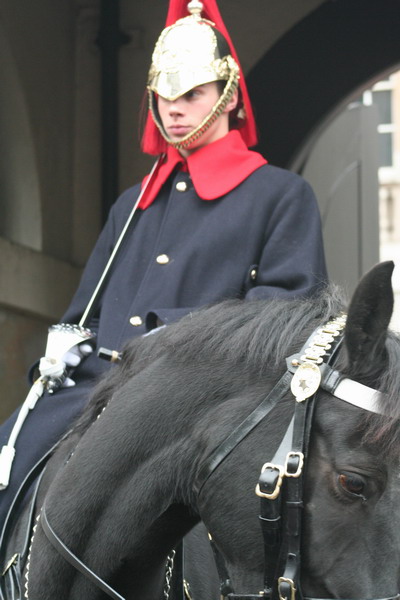
Westminster Abbey and the venerable Sir Winston Churchill.
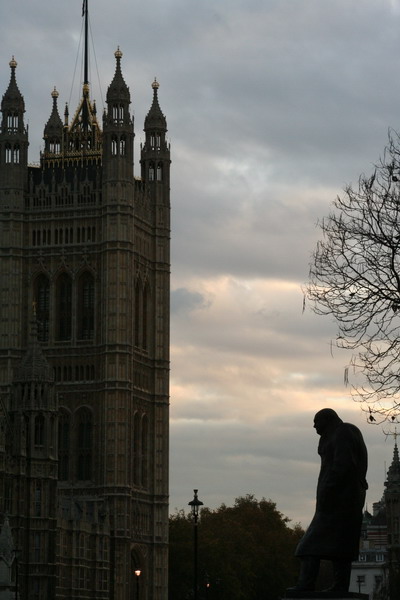
Here’s the Millennium Bridge in front of the Tate Modern Art Museum.
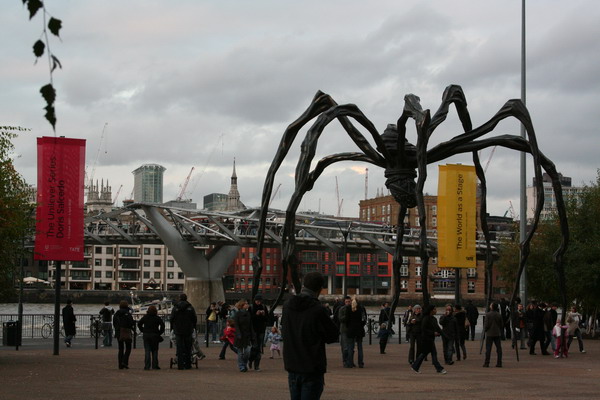
The Tate Modern is another fascinating site. It’s an old power station that has been converted into a museum. Actually, I think I liked the facility better than the art.
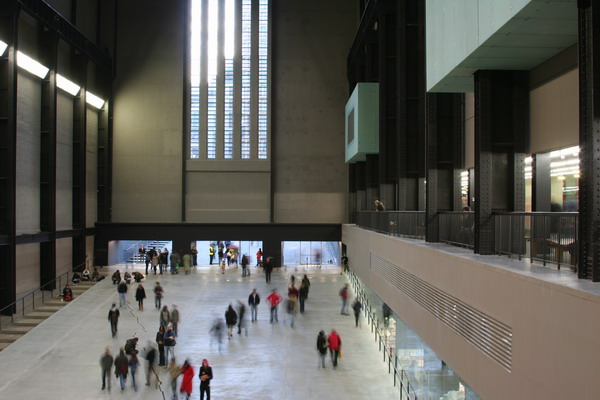
Here is the tube.
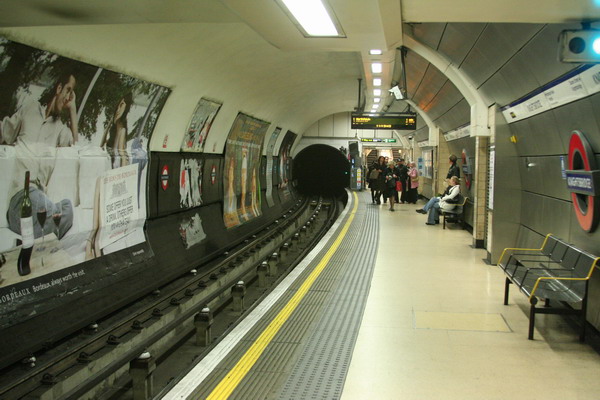
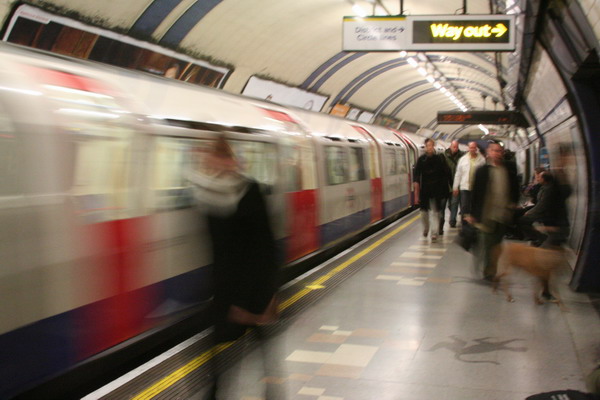
That concluded our great weekend in London with my parents. It was a whirlwind tour (as usual), but it was a lot of fun.
So, until the next adventure!
–Jim
Rhine River
Last weekend, we went with our friends Dave and Dominique to take a river cruise down the Rhine River.
On the Rhine in the summer there is a large festival called the Rhine in Flames. This is where a number of the towns along the Rhine put on fireworks displays the same evening. Well, it has become so popular that at least one company (the one we went with) offers a smaller version of the same concept.
So, we drove up the road to the town of Saint Goar where we boarded the boat. These next couple images are the views from a little cafe where we waited for the boat and had a snack.
The castle in the background is Burg Maus (or Mouse Castle).
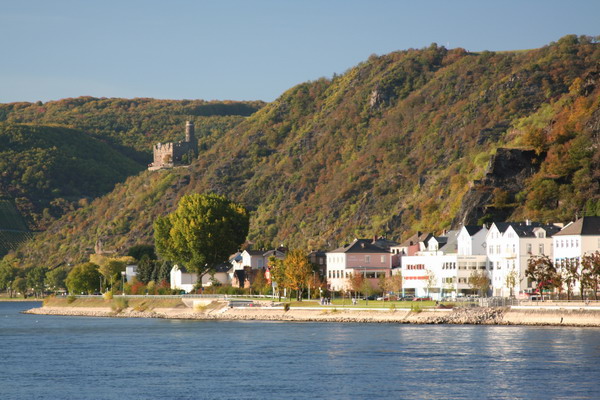
Interestingly, this castle is called Burg Katz … or the Cat Castle. This is due to the fact that the Katzenelnbogen family are the owners of the castle. It is also the reason that its neighbor is called the Mouse Castle.
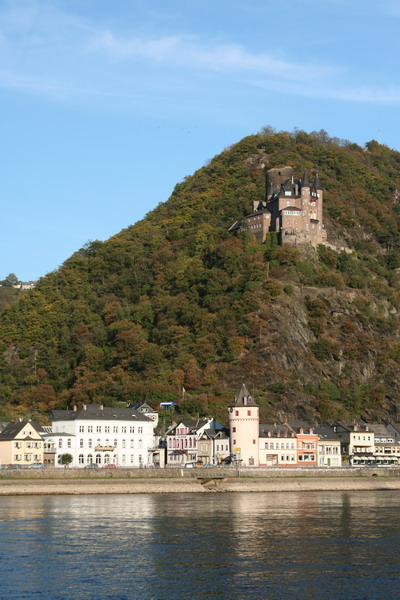
The cruise itself was quite enjoyable. The boat was packed with people. The four of us found our seats and a new friend, Susan. She was traveling with a group of Americans through Germany. Also, there was a musician playing a variety of music. It was fun to sing along to the German music. Well, ok, it was more like watch everyone else sing and we just got swept away with the jubilation.
When we reached the beautiful little town of Bachrach, we disembarked for a delightful stroll and dinner in this town of 1,000 people.
As you can see, I had a little fun with longer photo exposures.
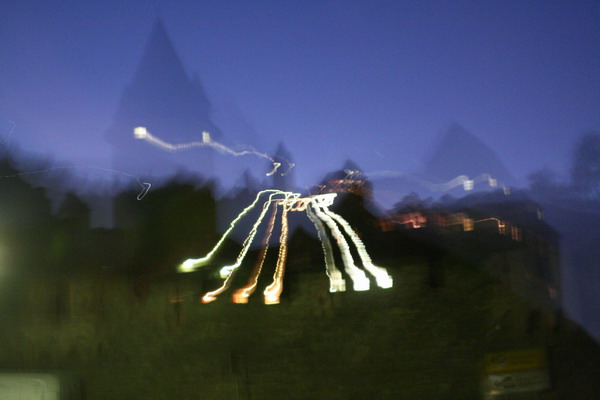
After dinner, we got back on the boat to watch the “Rhine in Flames” firework show. Perhaps a bit underwhelming, but nice nonetheless.
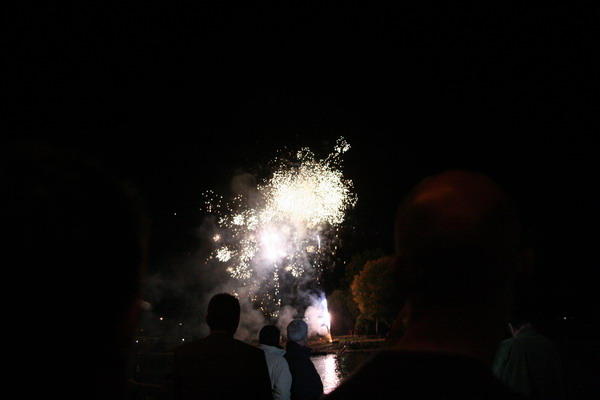
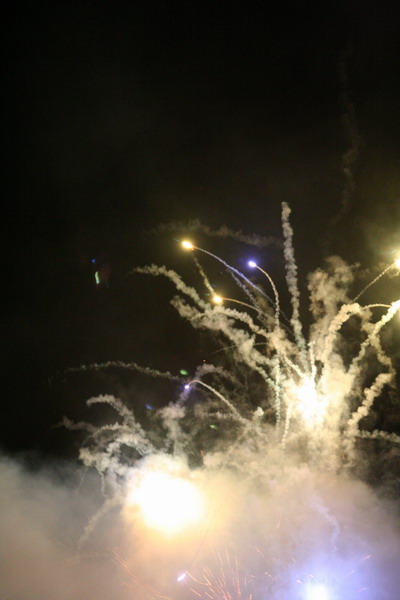
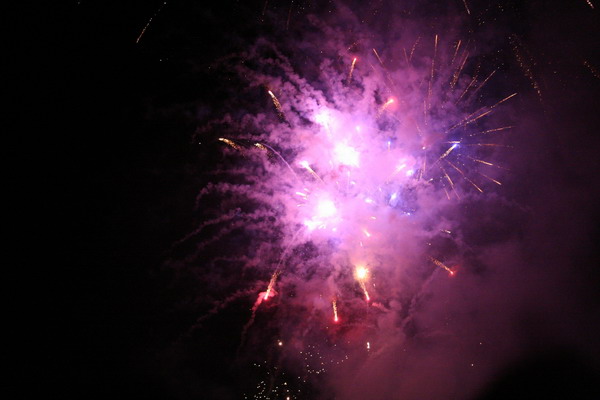
Eventually, we made it back to St. Goar and Burg Katz.
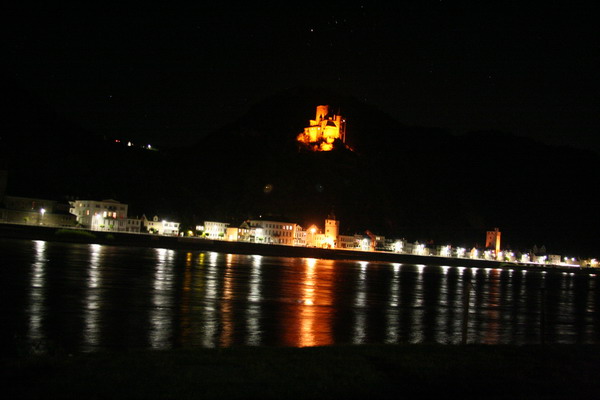
Another long exposure image.
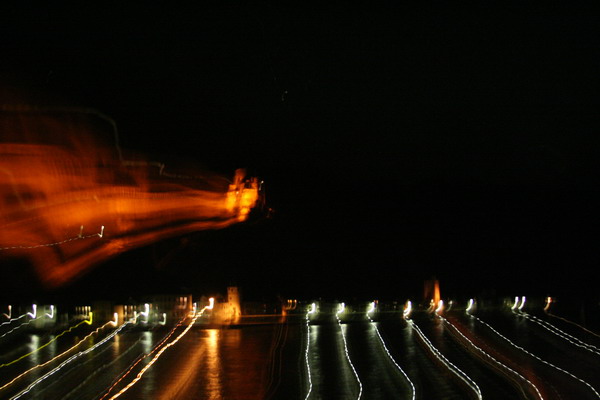
So, that concluded our (short) trip down the Rhine with all its castles and ruins. Although we are still preferential to the Mosel River, it was very pretty and we can’t wait to go back and explore further.
So, until the next adventure…
–Jim
